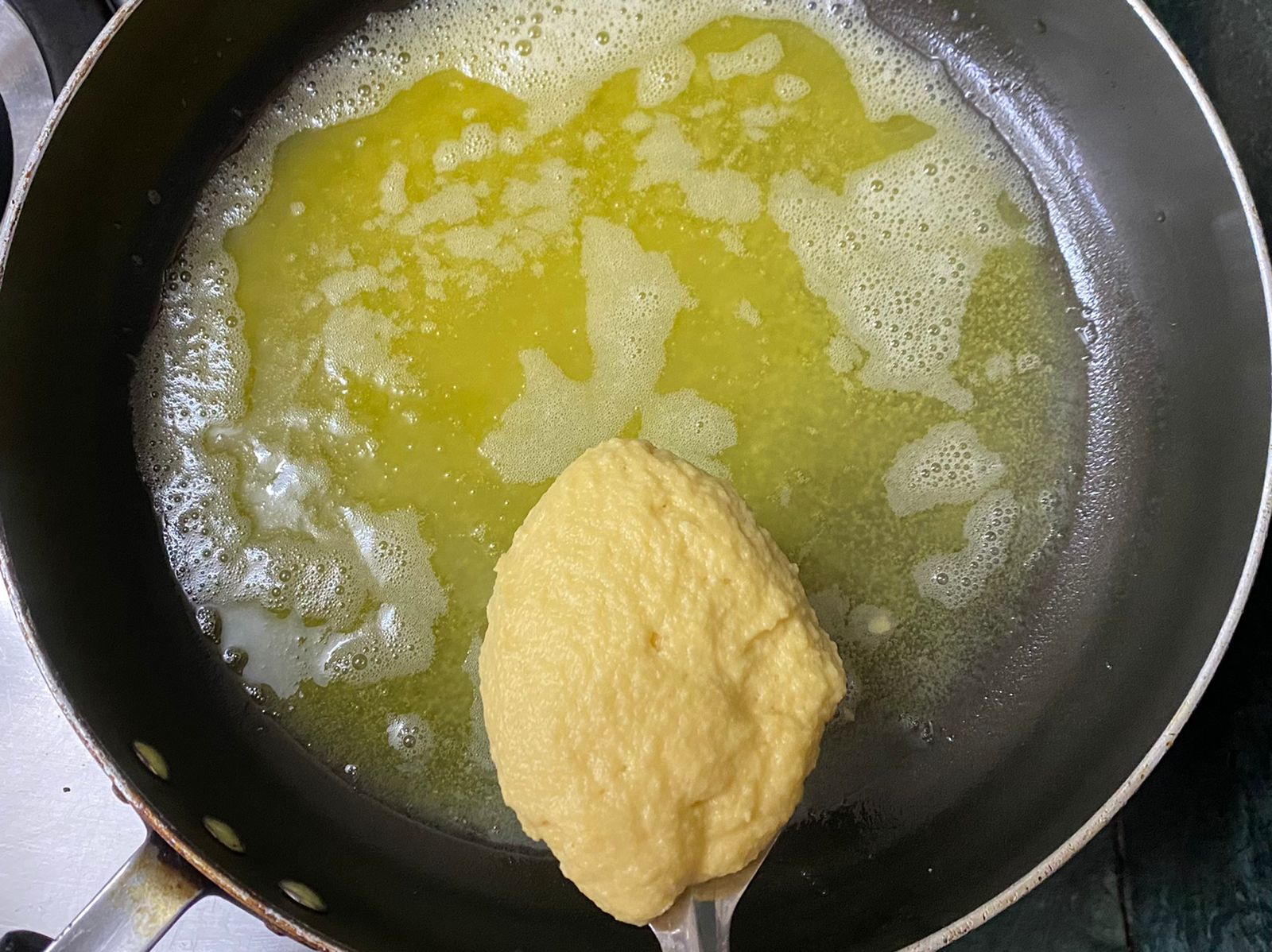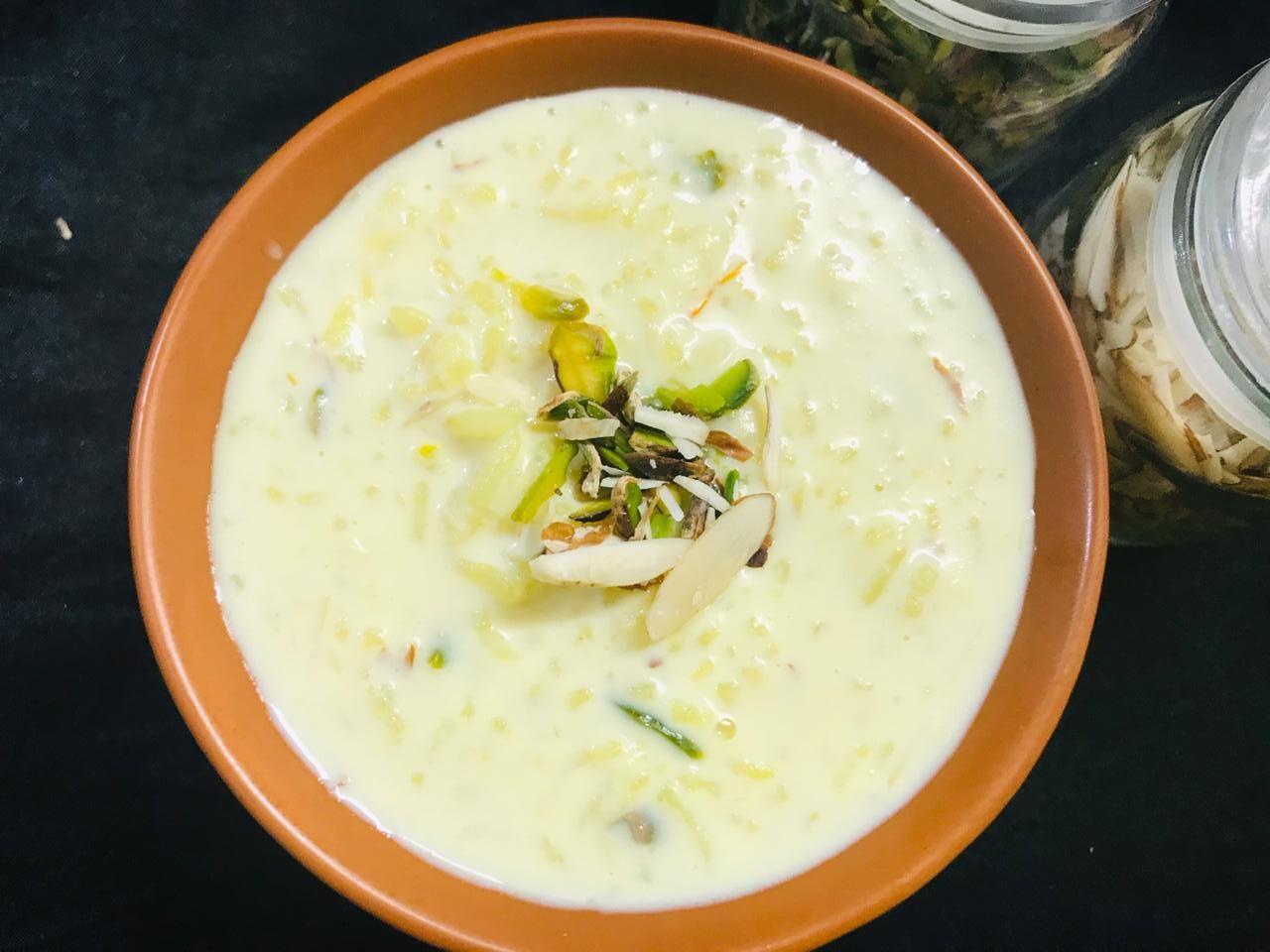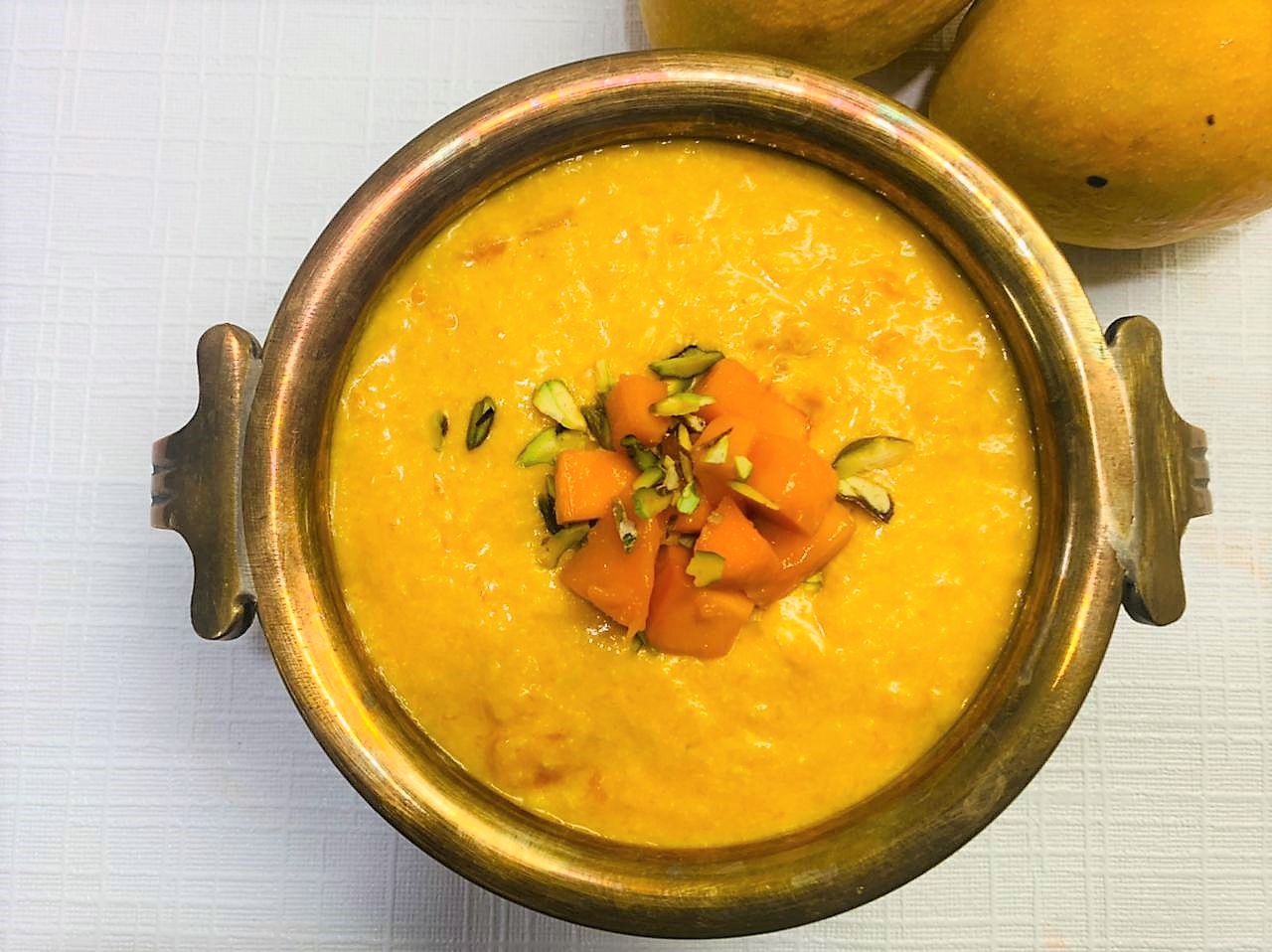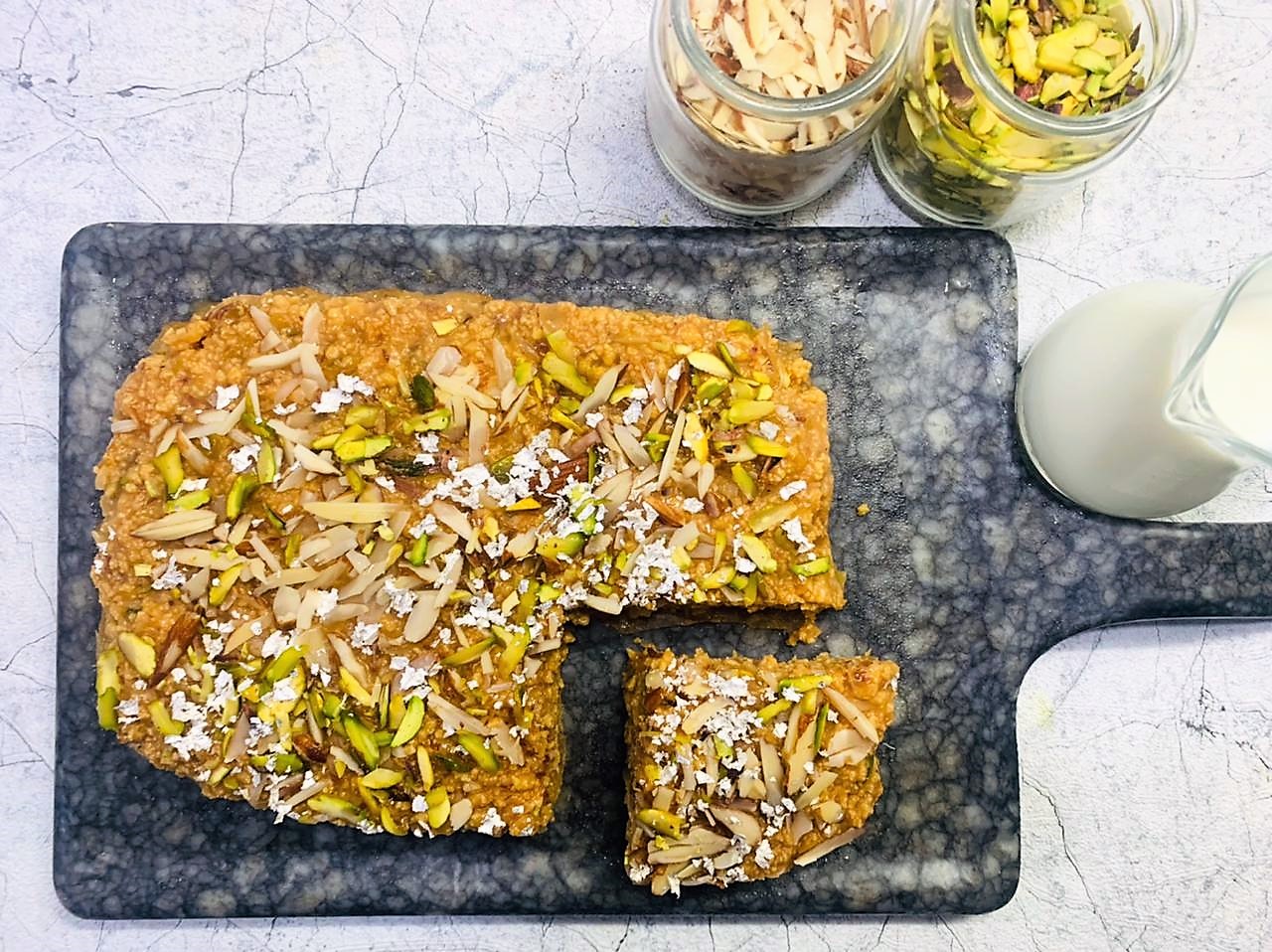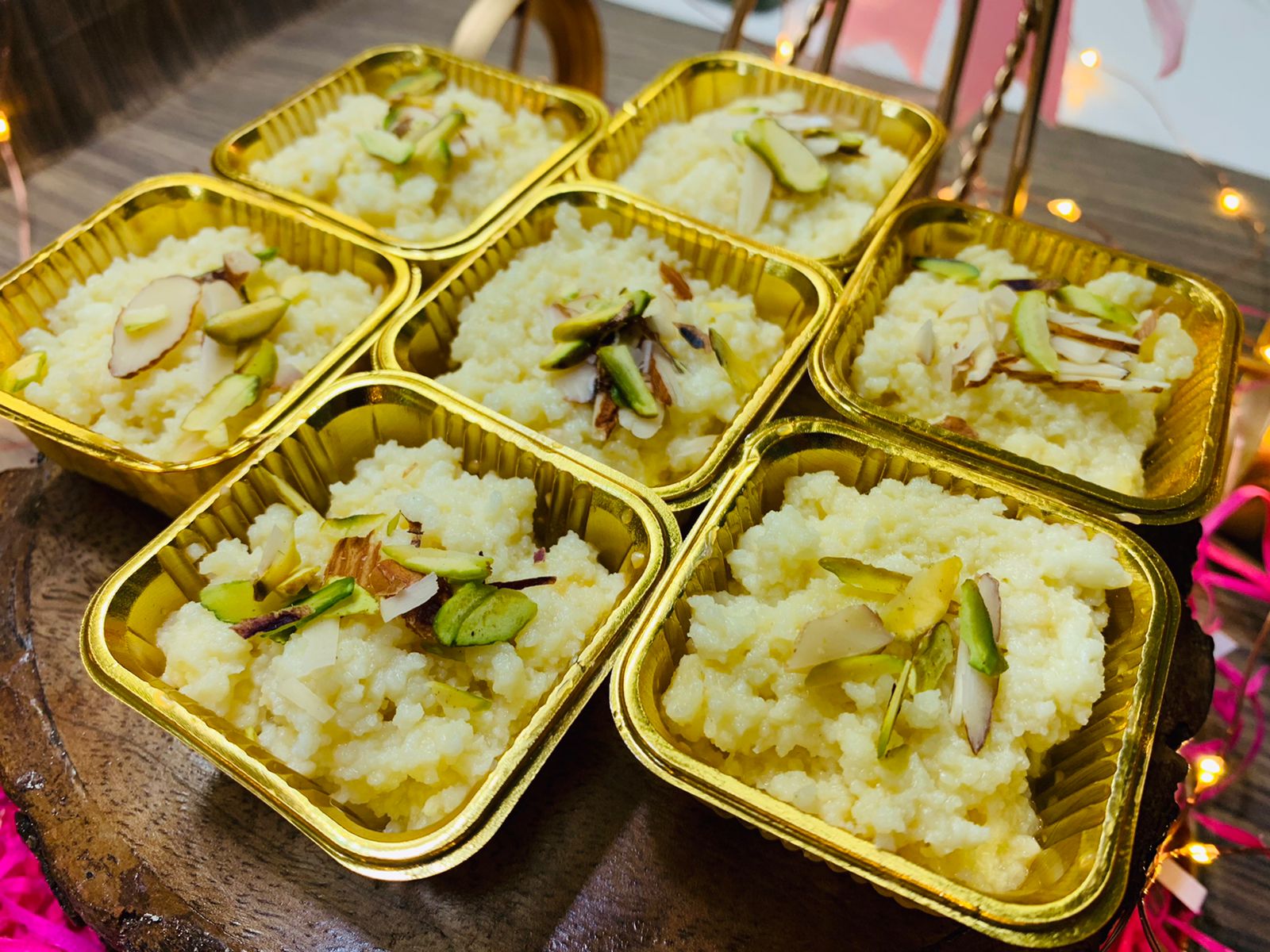Moong Dal Halwa
Moong Dal Halwa is a rich and indulgent Indian dessert made with moong dal, ghee, sugar and almonds with its origins tracing back to Rajasthan. The richness of this Moong Dal Halwa recipe makes it a perfect dessert for winter months of North India as it is believed that halwa keeps the body warm and protects from the effect of cold.
The term ‘halwa’ comes from ‘hulw,’ an Arabic word meaning ‘sweet.’ It is believed that halwa originated in Arabia/Middle East and reached India through Persia. There are many varieties of halwa in the Indian cuisine and Indian depending on the region and then base of the halwa. In India halwa is made using fruits, vegetables, lentils, flours and various other ingredients.
Rajasthan cuisine is well known for its ingenious use of making the most with its minimal resources due to its geographical position. Moong Dal halwa is considered to be one of the most auspicious desserts in Rajasthan and is prepared for special occasions such as Diwali or any religious occasions and weddings.
Moong Dal Halwa is what I term the top of the lot Halwa! This is one of my favourites and an extremely relishing delicacy. My mother and sister-in-law always prepared Moong Dal Halwa for Diwali. No other halwa could take the place of this delicious halwa ever on Diwali. This is my mother’s recipe and everyone in the family makes Moong Dal Halwa for Diwali using this recipe. This halwa is quite labour intensive and requires lots of time and patience to cook.
Some other popular Indian desserts you might like are Gajar Halwa, Badam Halwa, Instant Badam Halwa, Jalebi, Sugar Free Makhane ki Kheer, Santre ki Kheer, and Sandesh to name a few.
Ingredients
1½ cups ghee
1½ cups moong dal (spilt and husked yellow moong lentil)
1 teaspoon gram flour
1½ cups sugar
1/2 cup water
A pinch of saffron (kesar)
1-2 teaspoons milk (for skimming)
½ cup finely chopped unsalted almonds
1 cup crumbled mawa/khoya
1 teaspoon cardamon powder (optional)
Directions
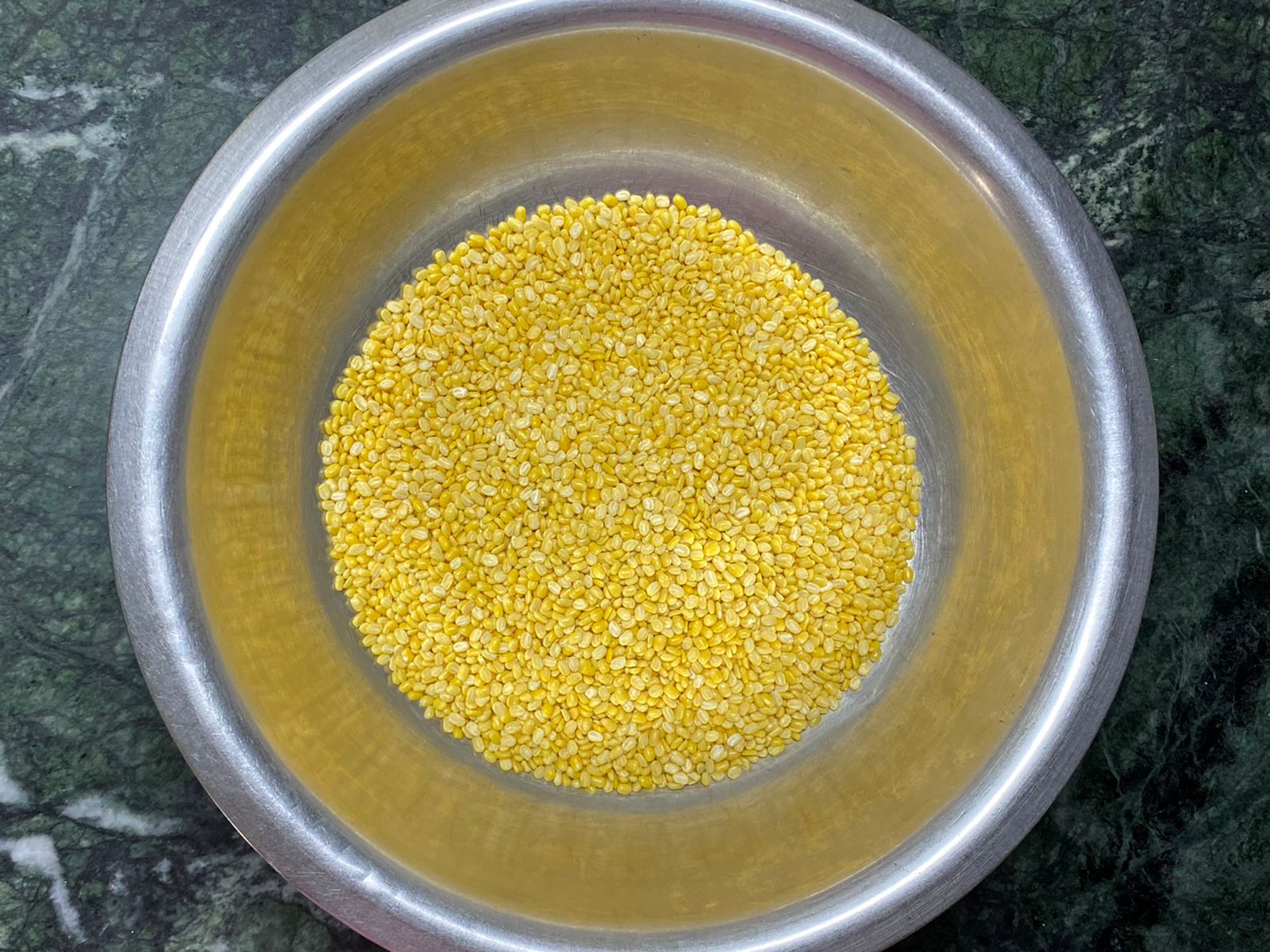
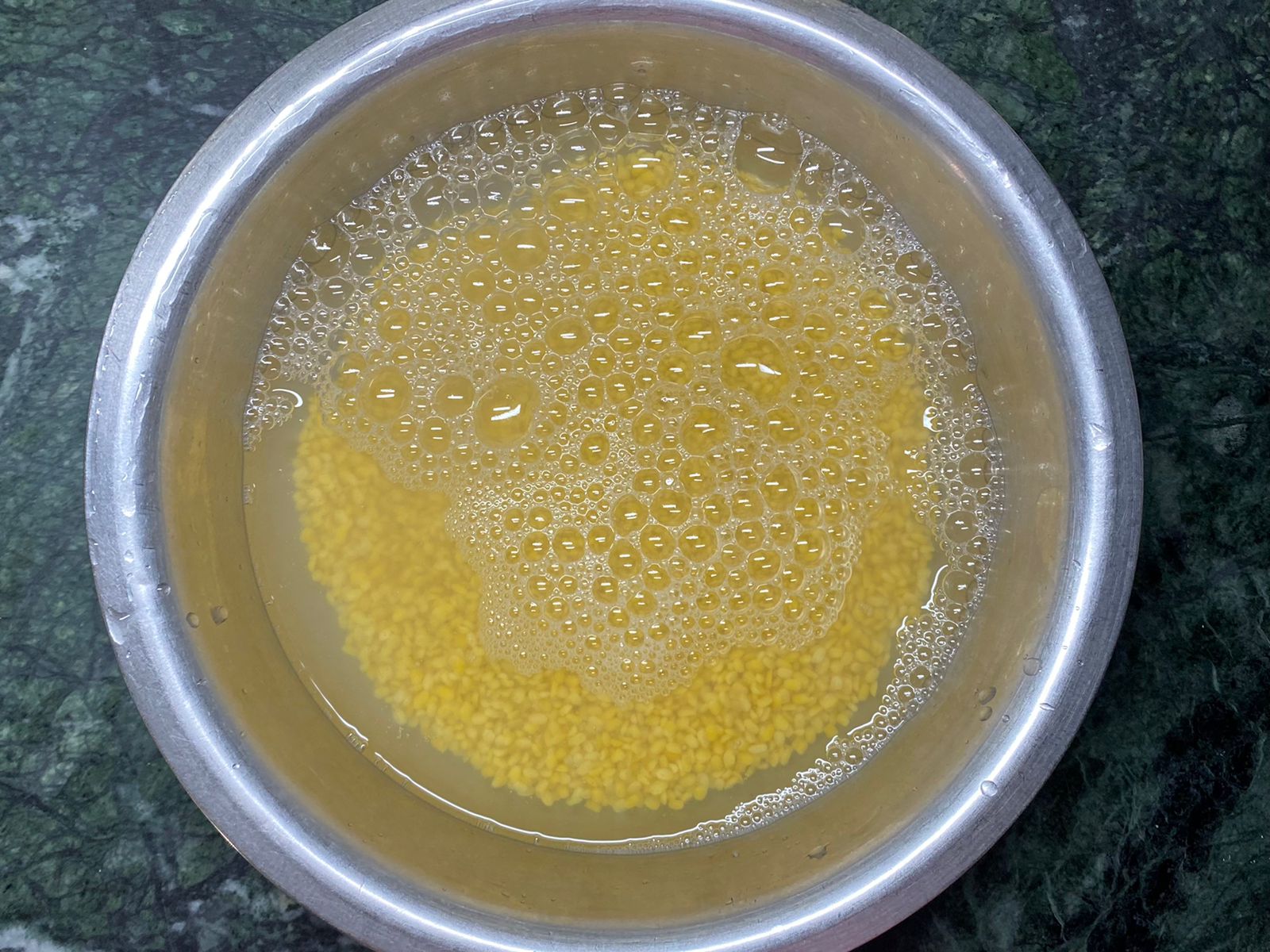
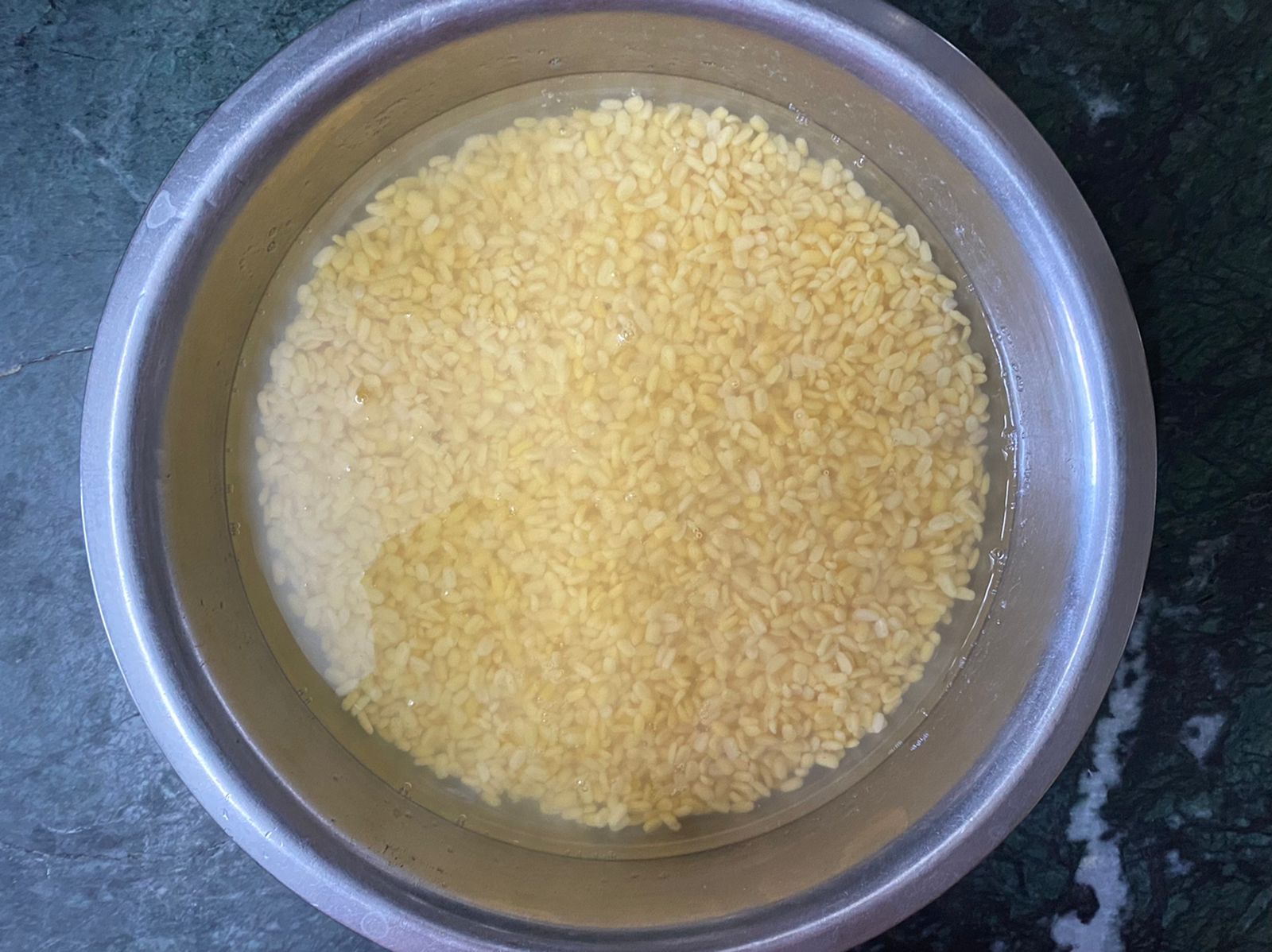
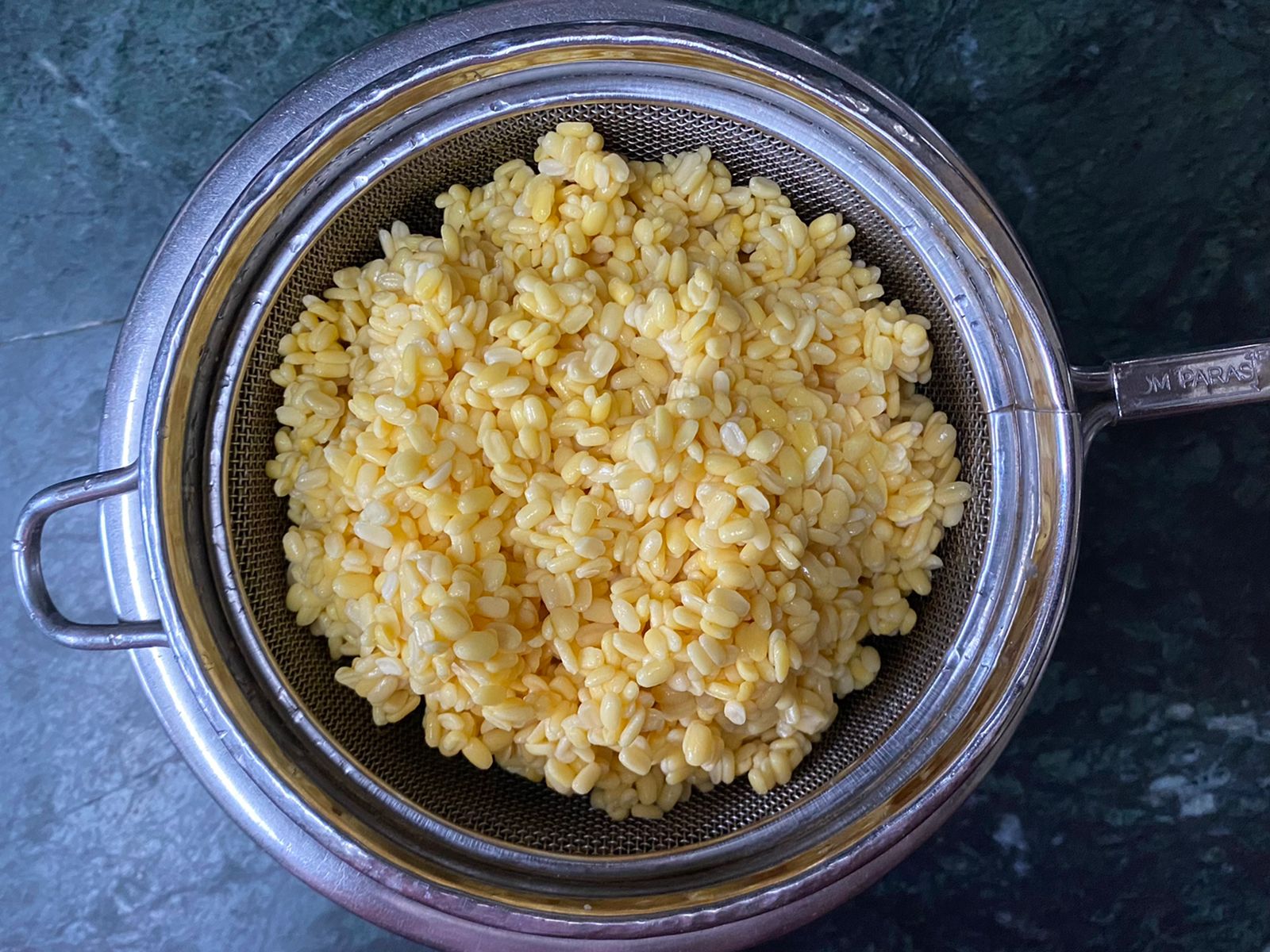
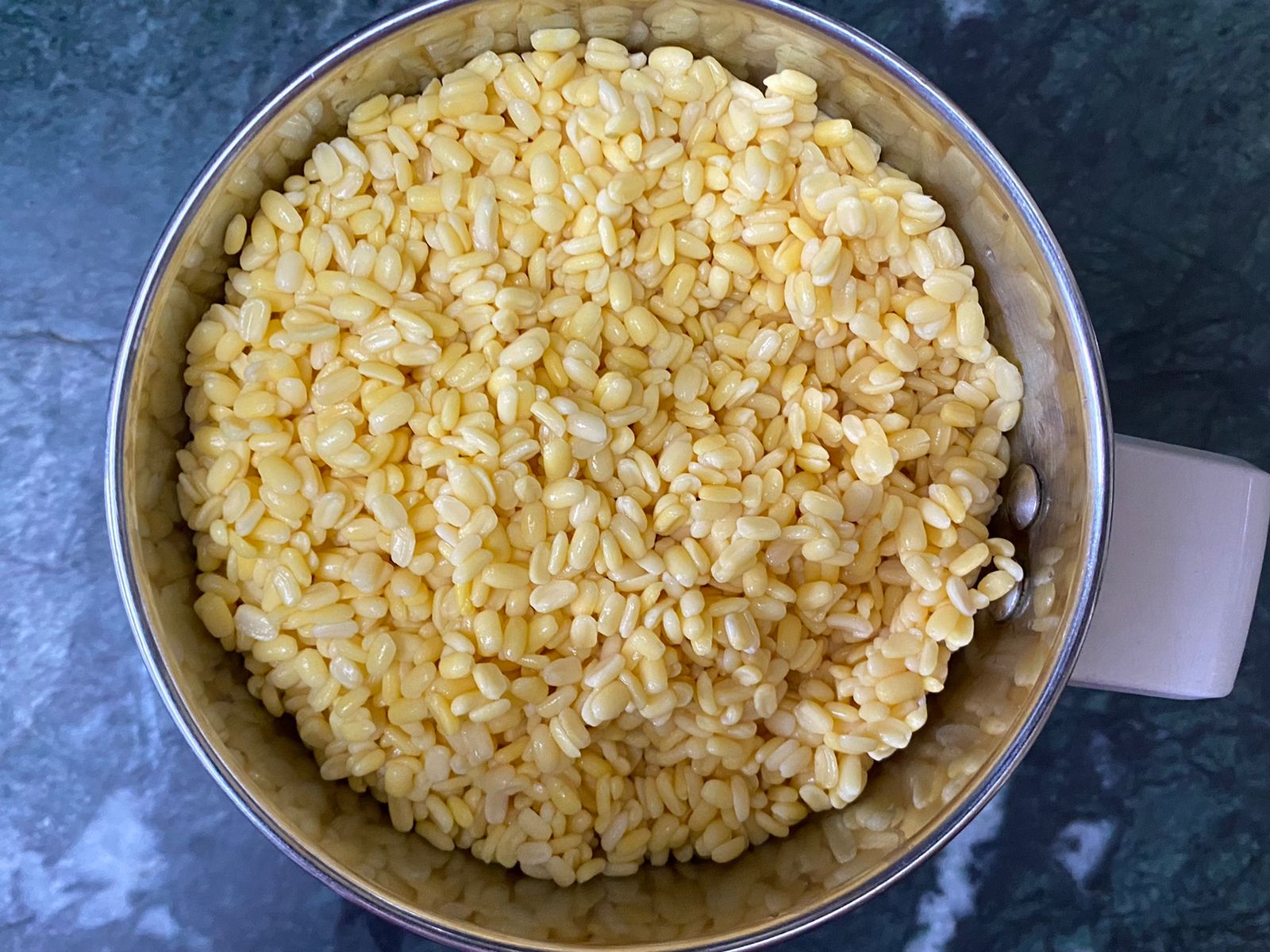
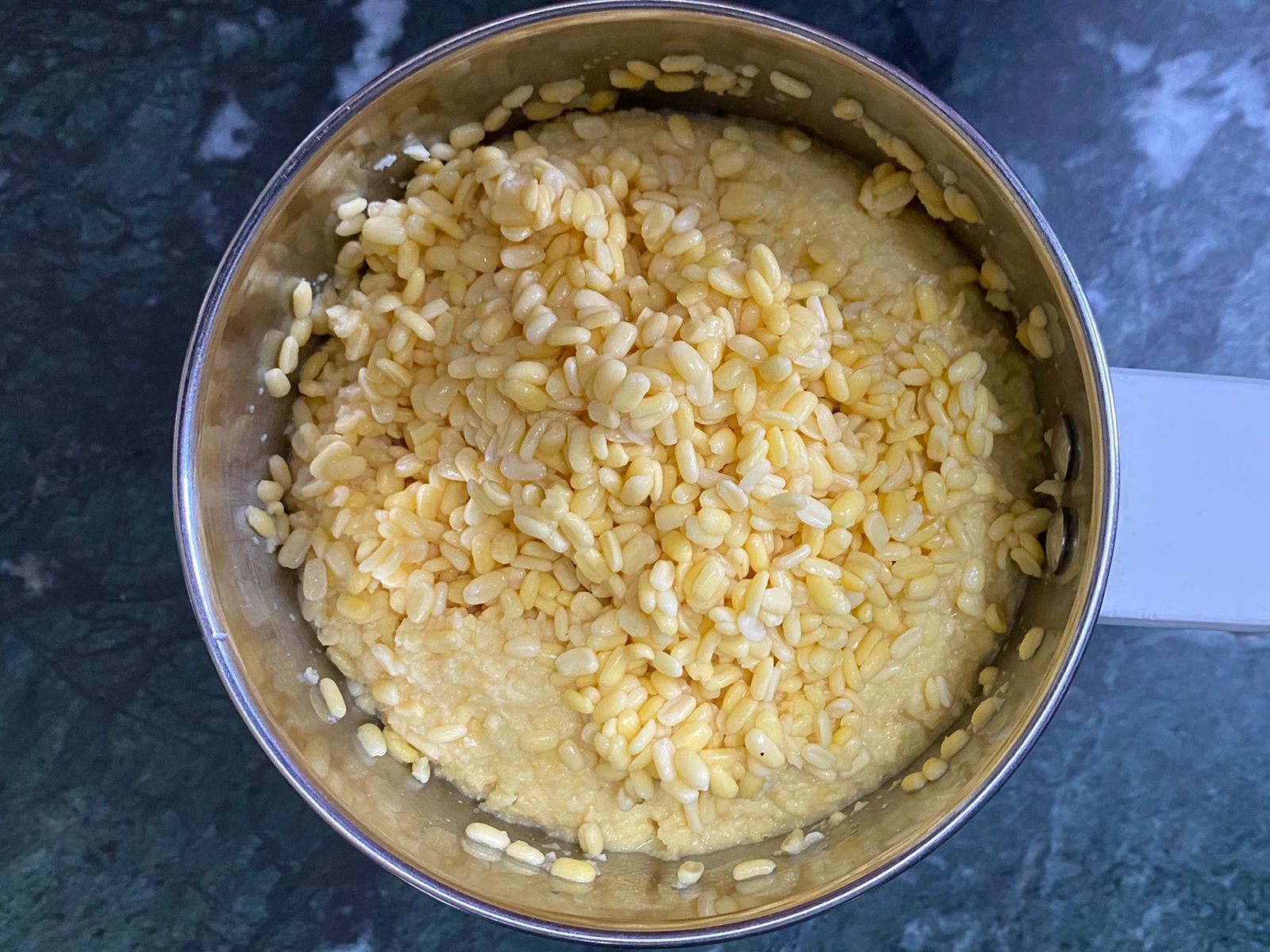
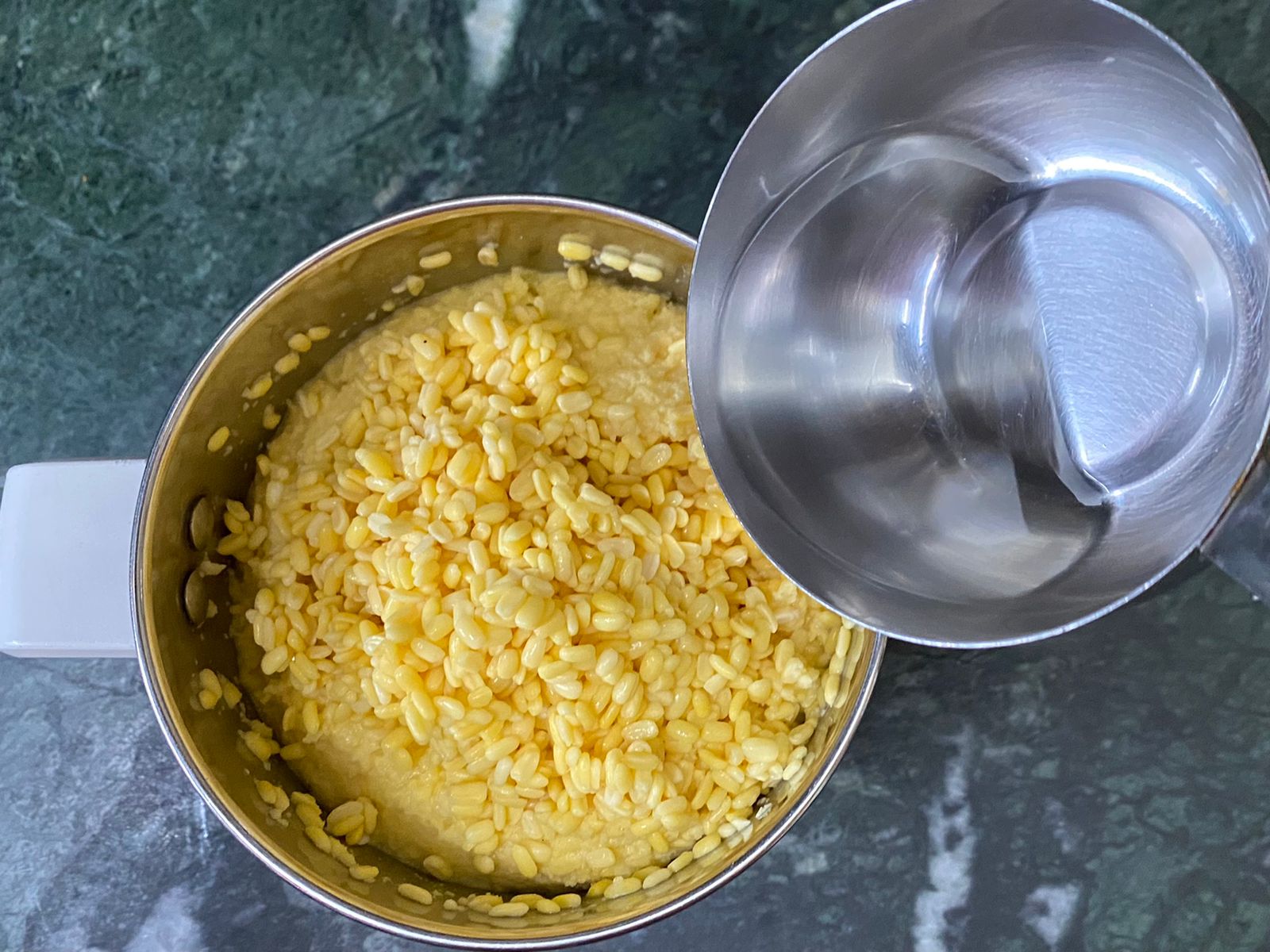
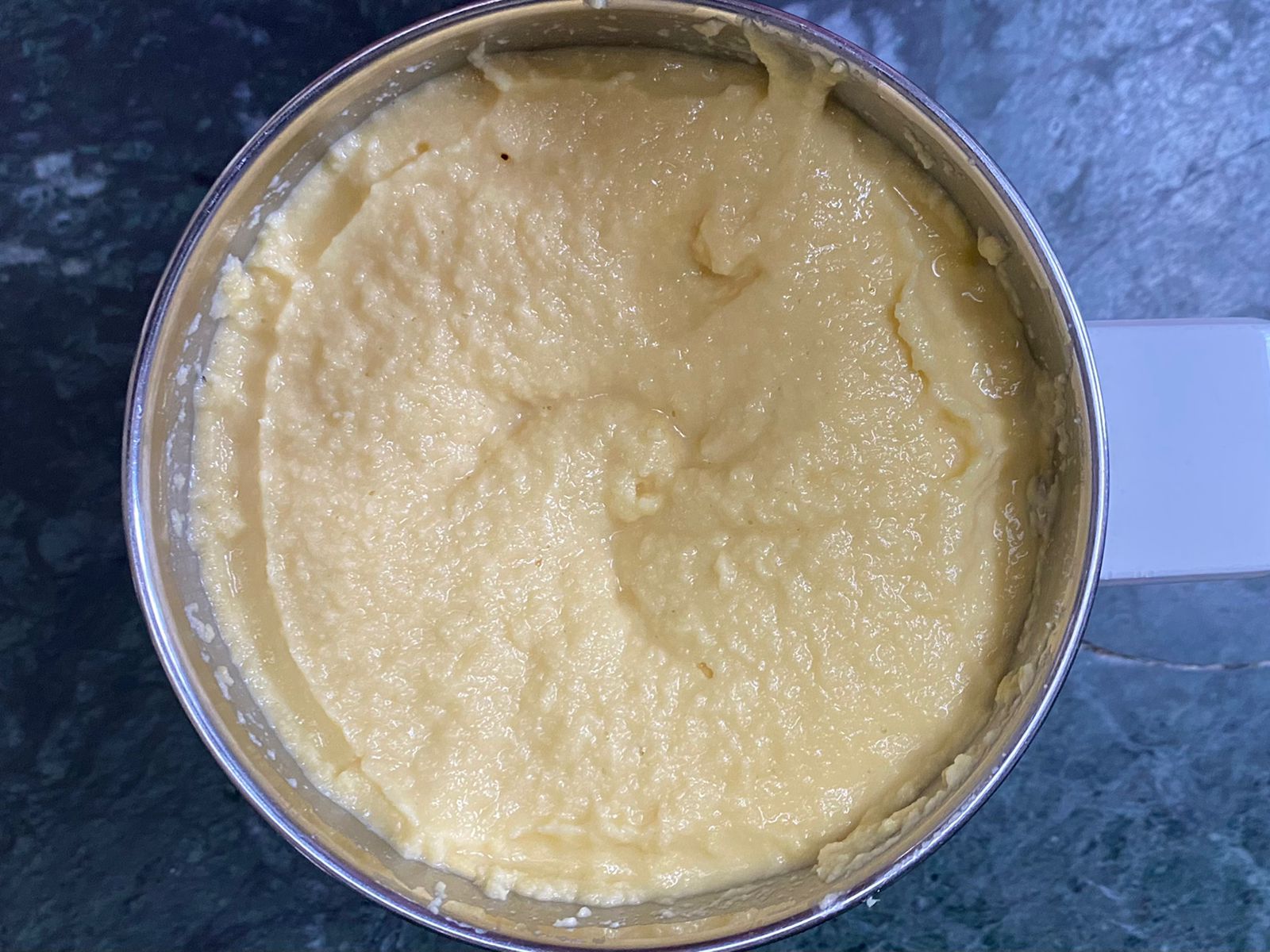
Wash and soak the dal for about 2-3 hours.
Drain the soaked dal and grind the moong dal to a smooth paste. I would recommend not to add too much water while grinding as we need a thick batter. The wetter the batter the more time it will take to cook so only add 1-2 teaspoons if needed while grinding.
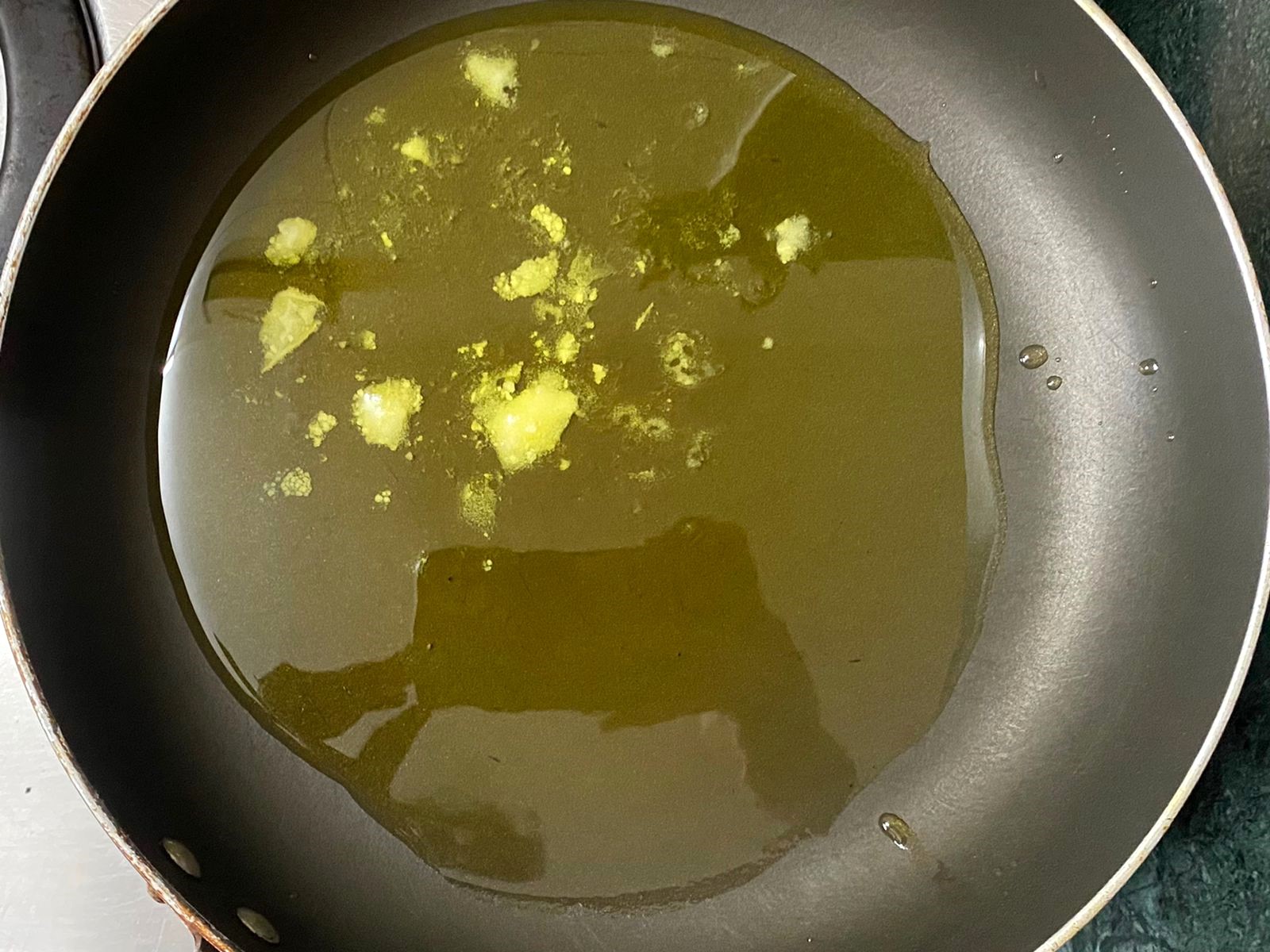
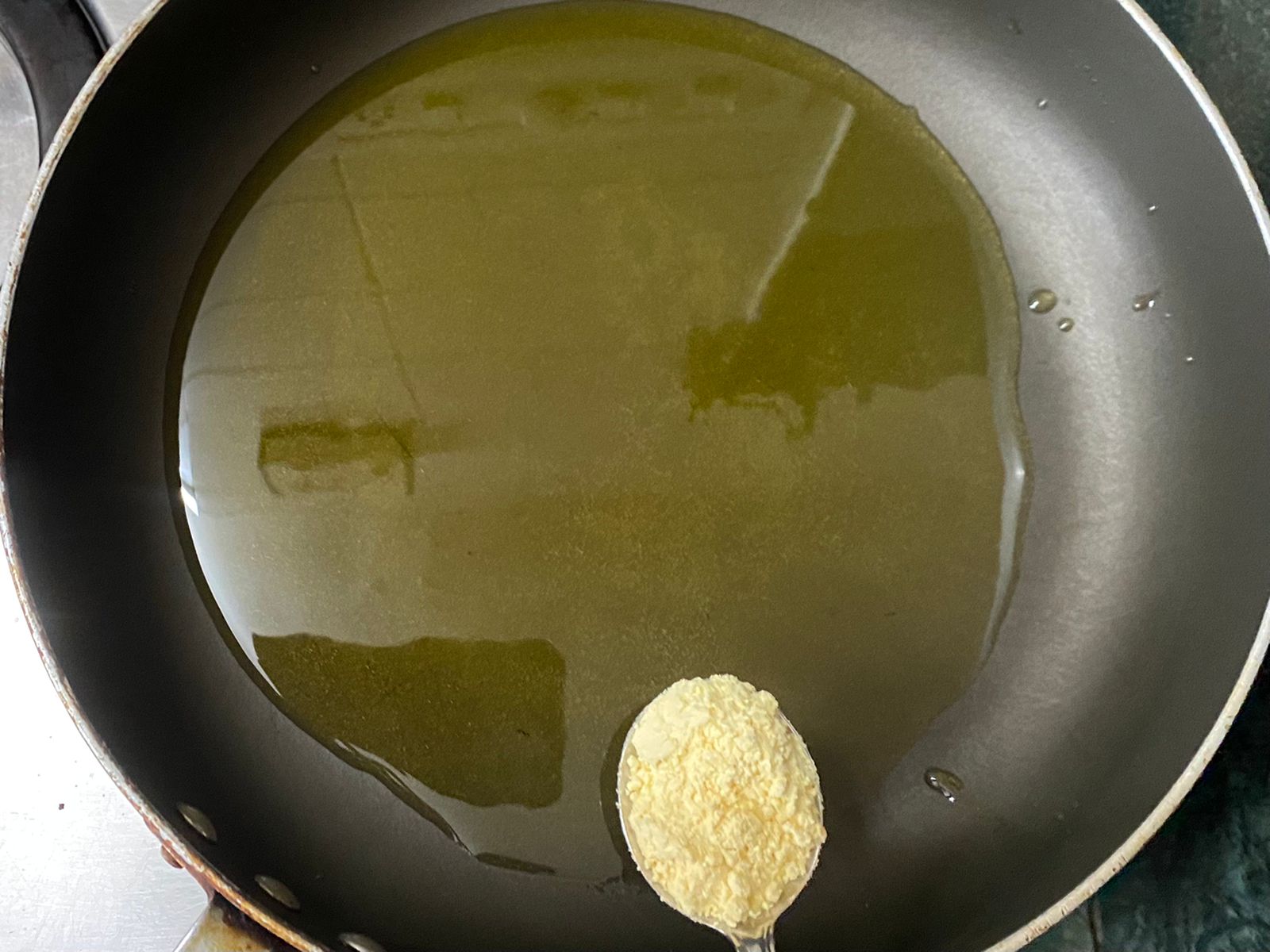
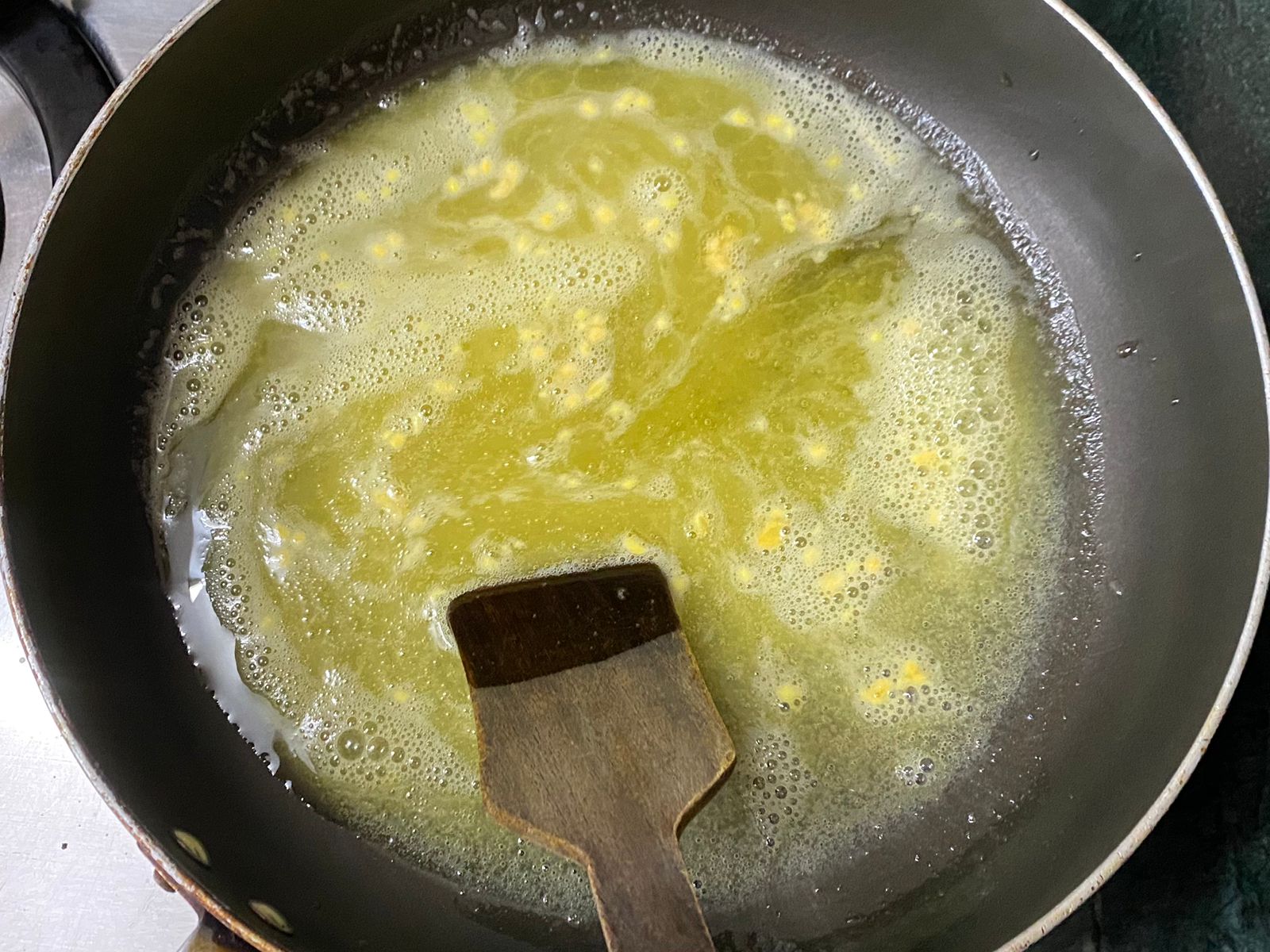
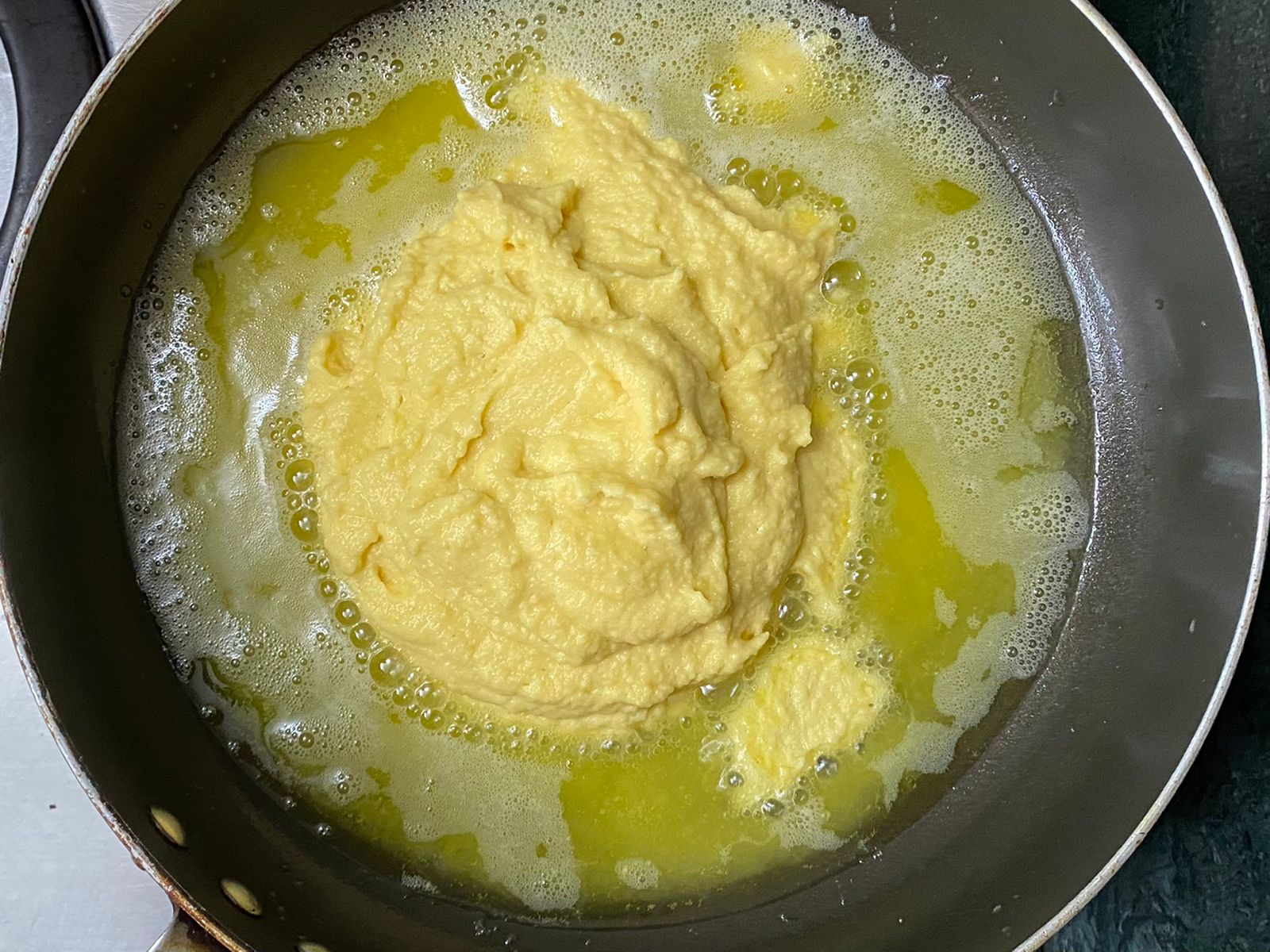
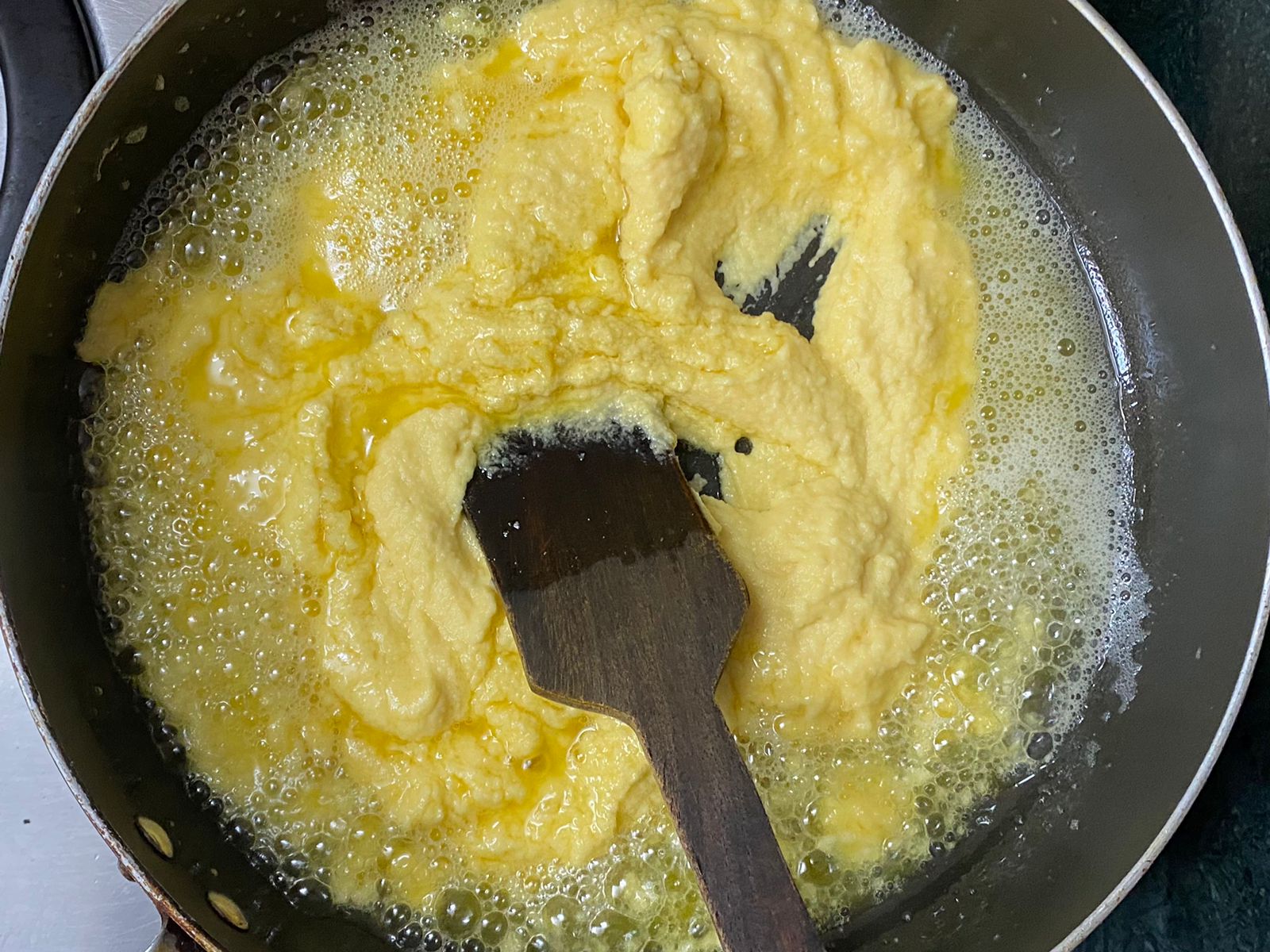
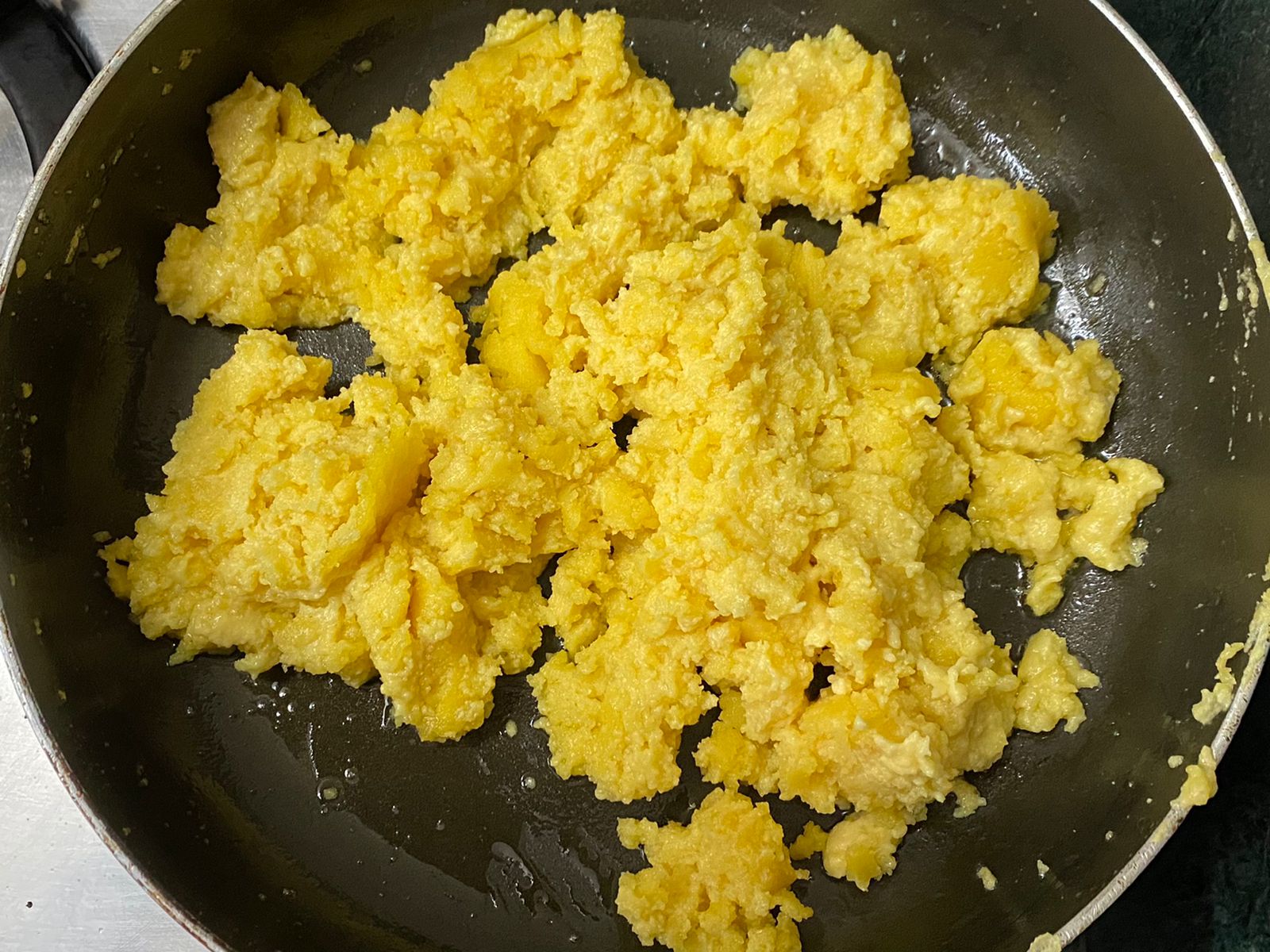
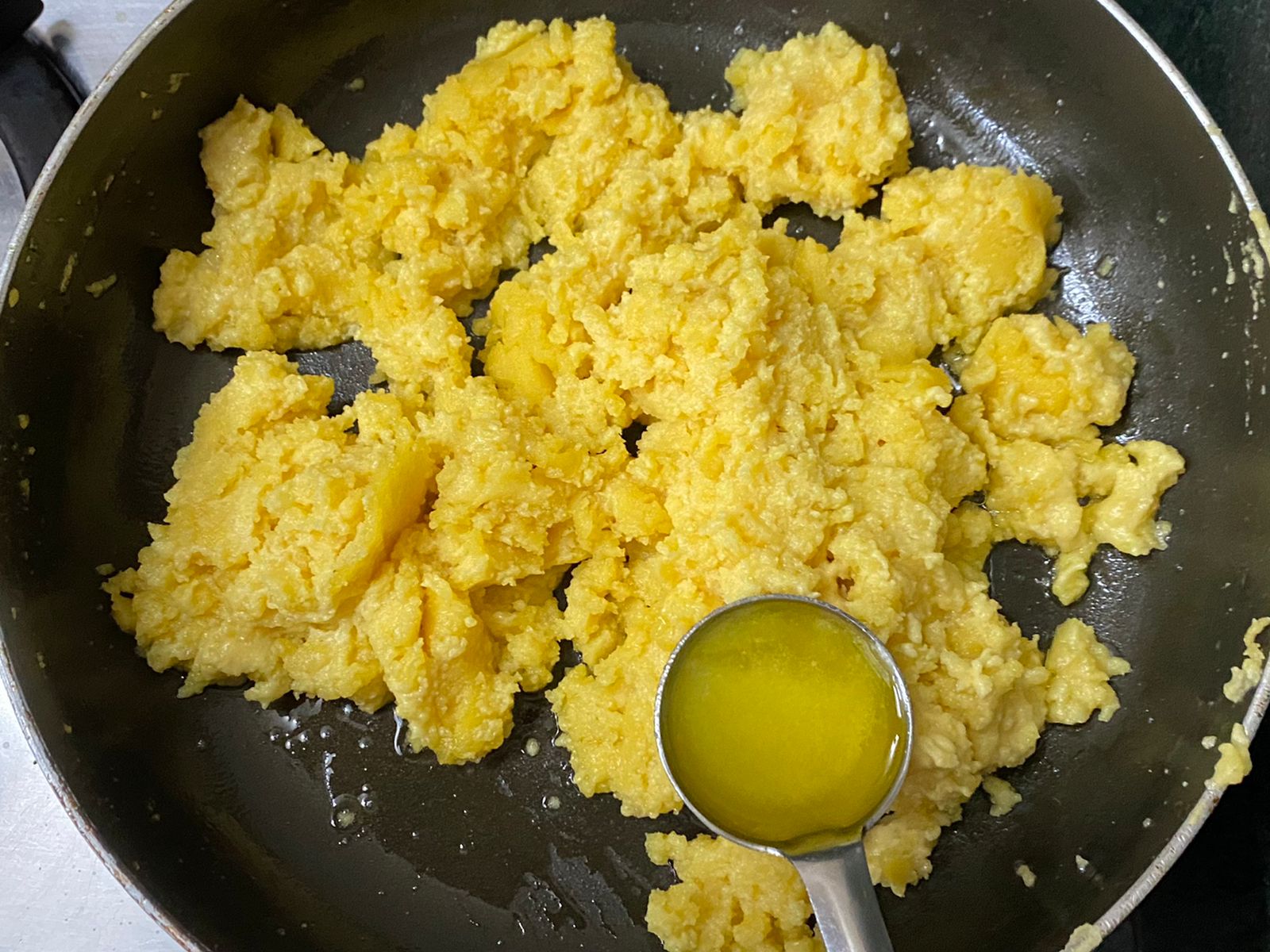
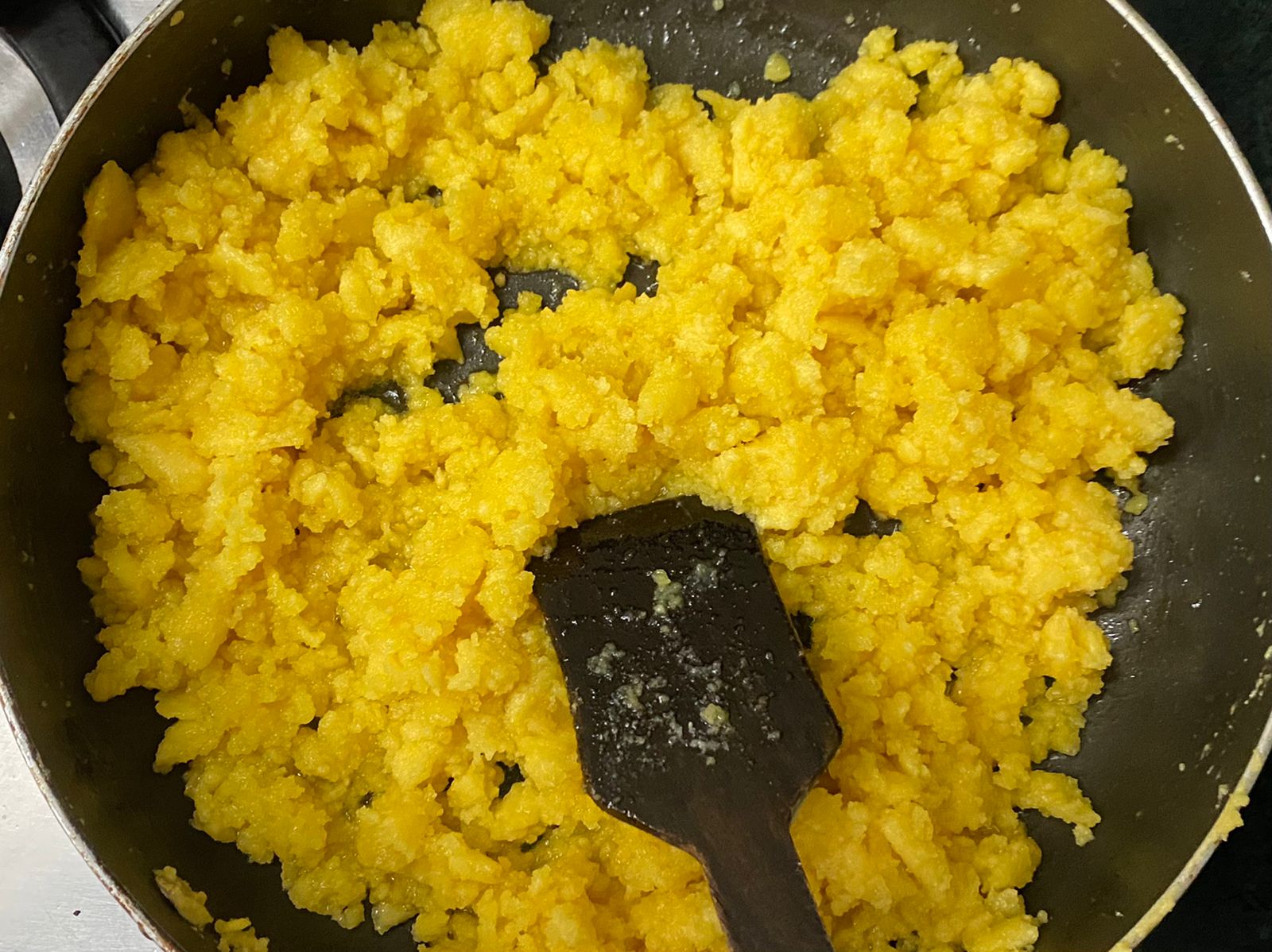
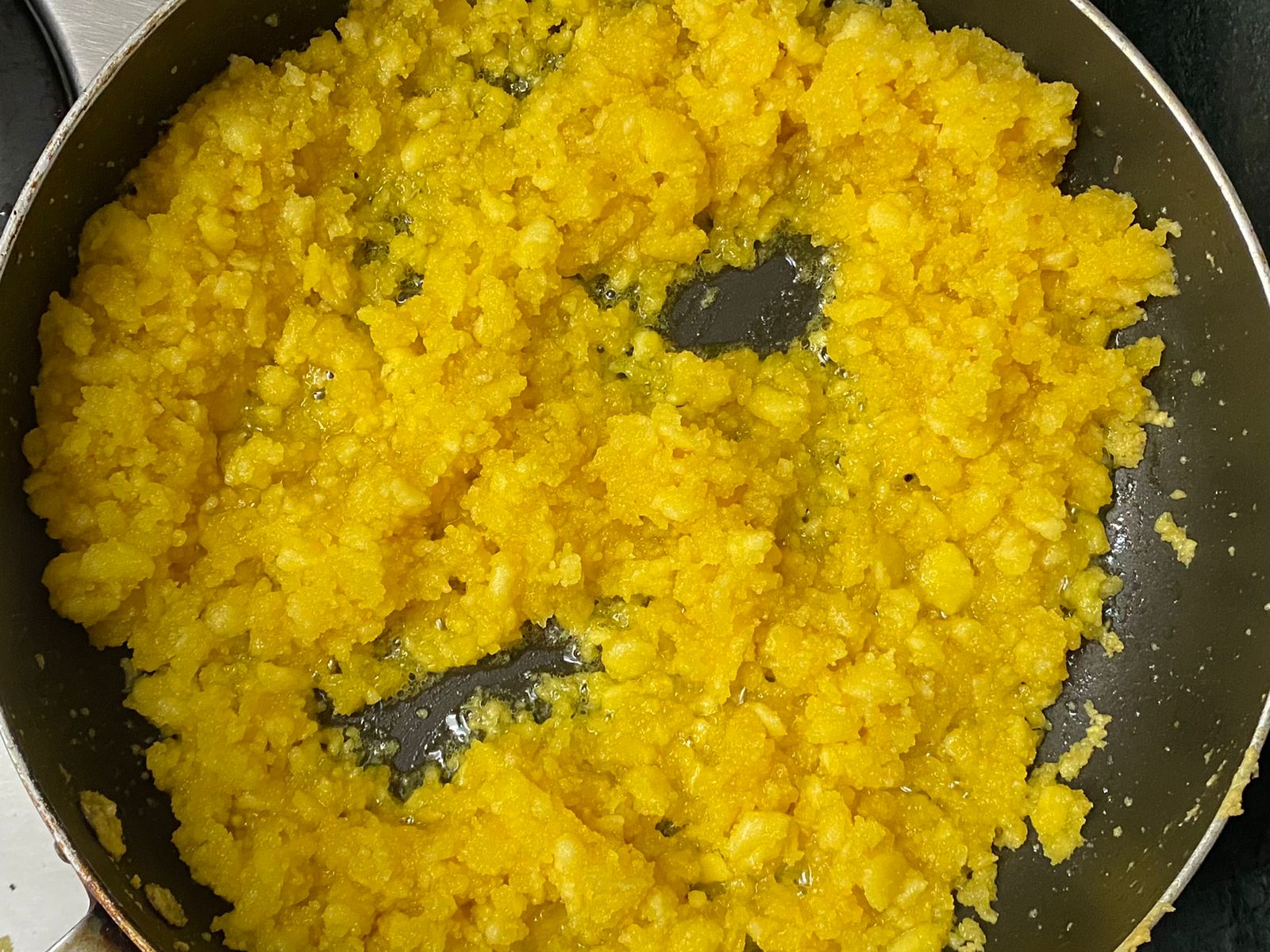
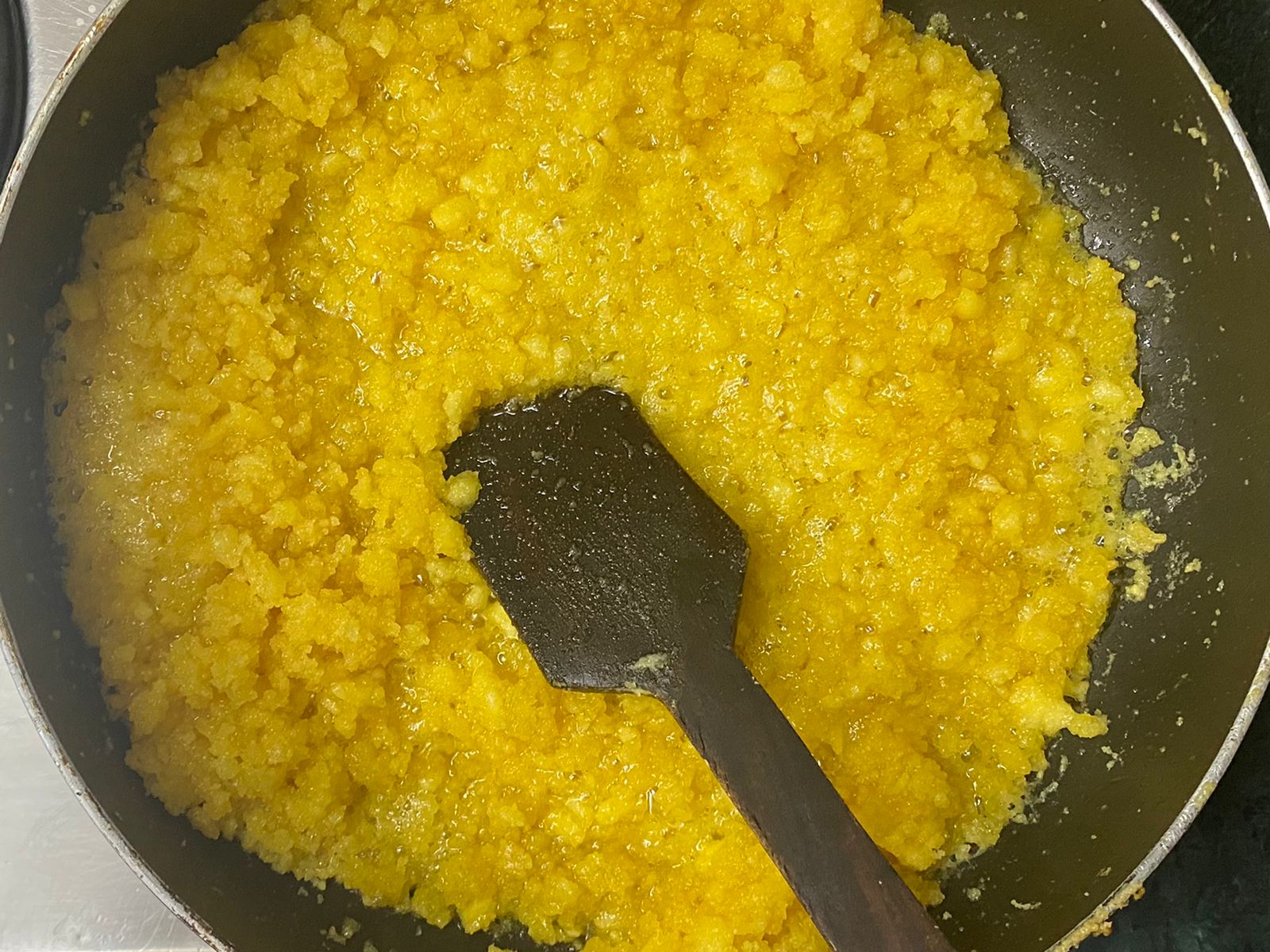
Heat 1 cup ghee in a non-stick pan or a well-seasoned frying pan and add the gram flour. Roast it on medium heat for 1 minute and then add the ground moong dal. Cook on medium to low heat stirring constantly until it turns golden in colour and does not stick together. It takes 15-20 minutes approximately. Add the remaining ½ cup ghee in between when you feel the dal is sticking together a lot as it helps in loosening the dal. (You will notice that the halwa turns pasty in the beginning and then forms lumps and then breaks down again and gets separated as the ghee releases from the sides)
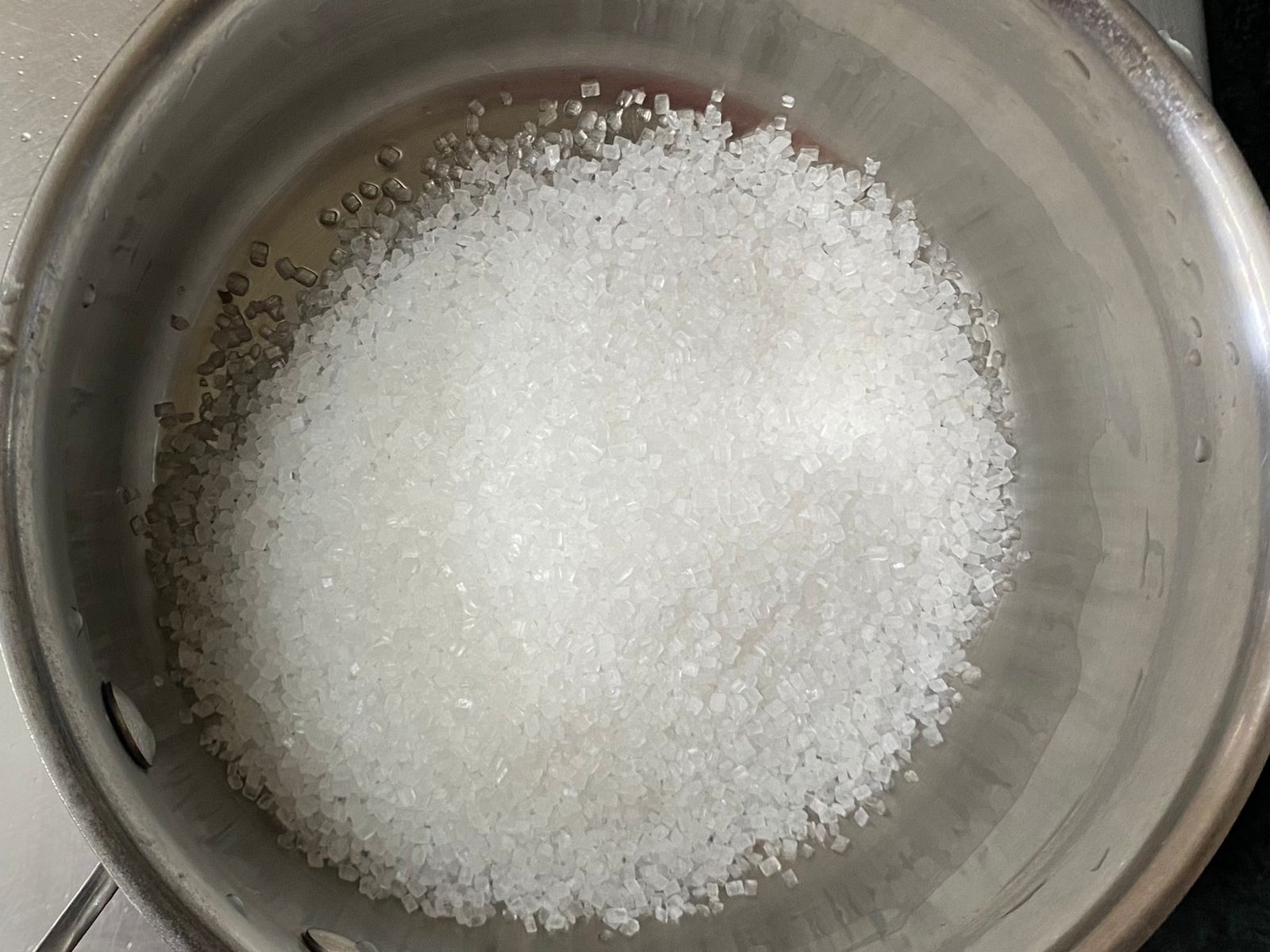
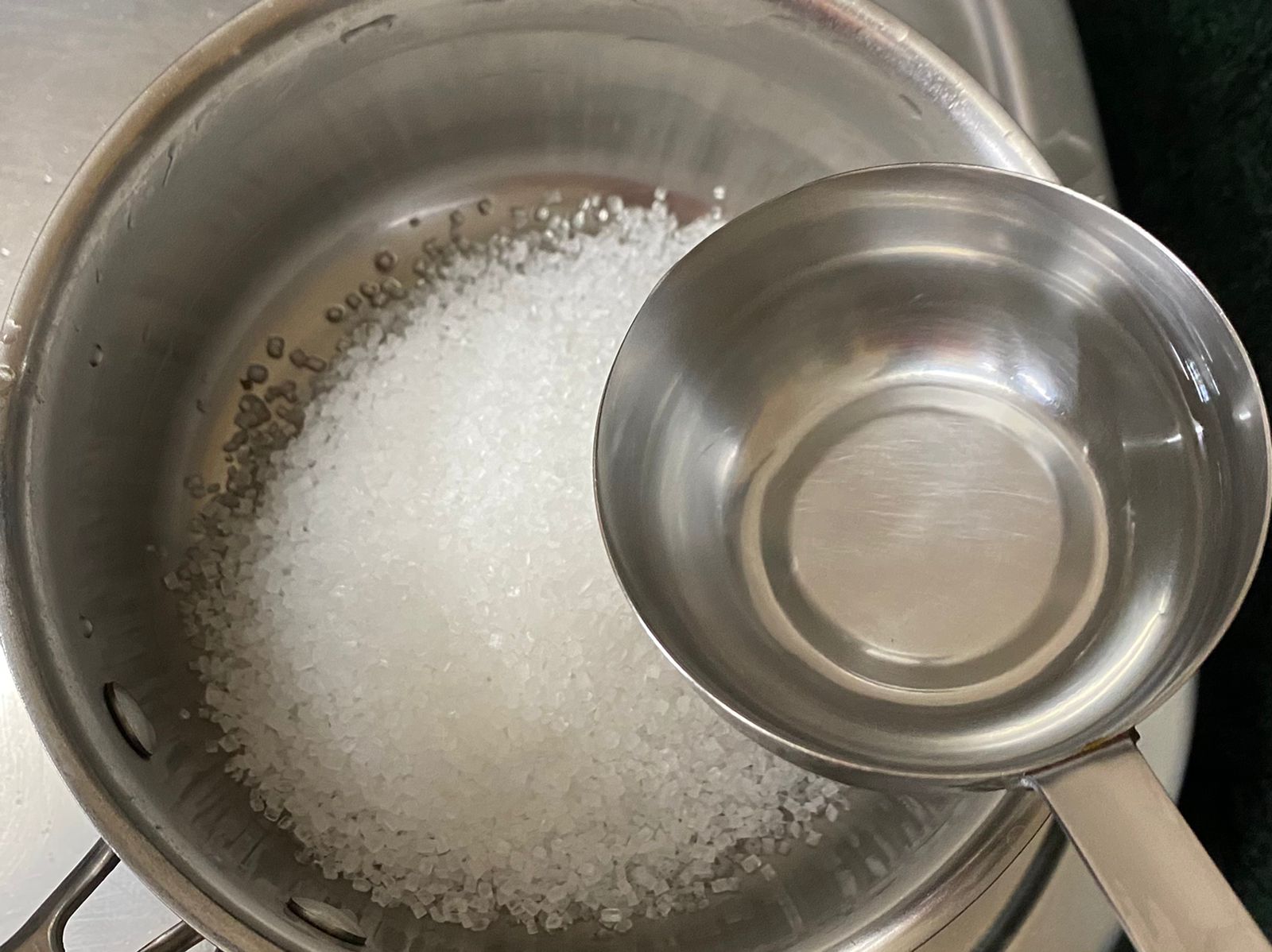
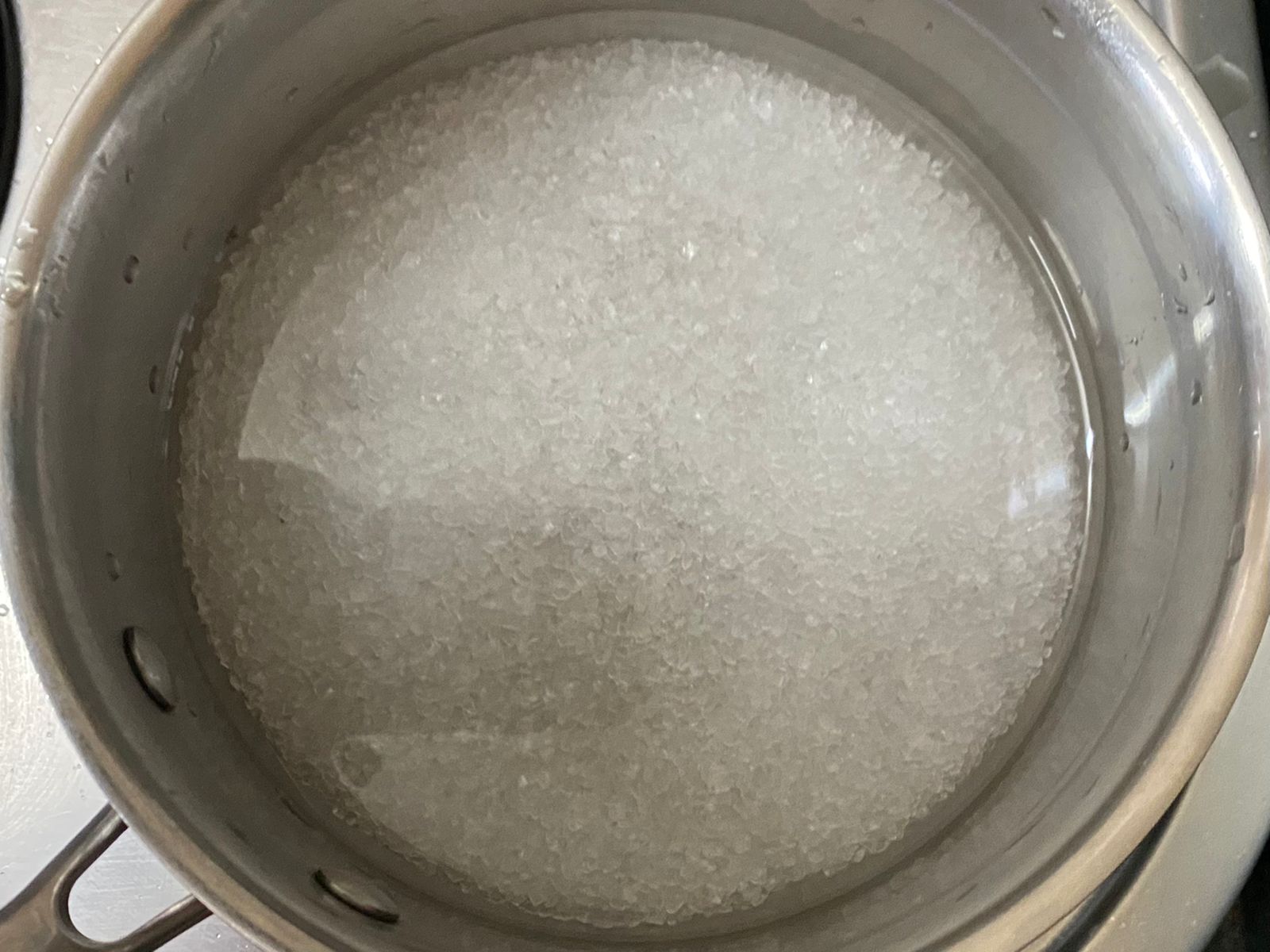
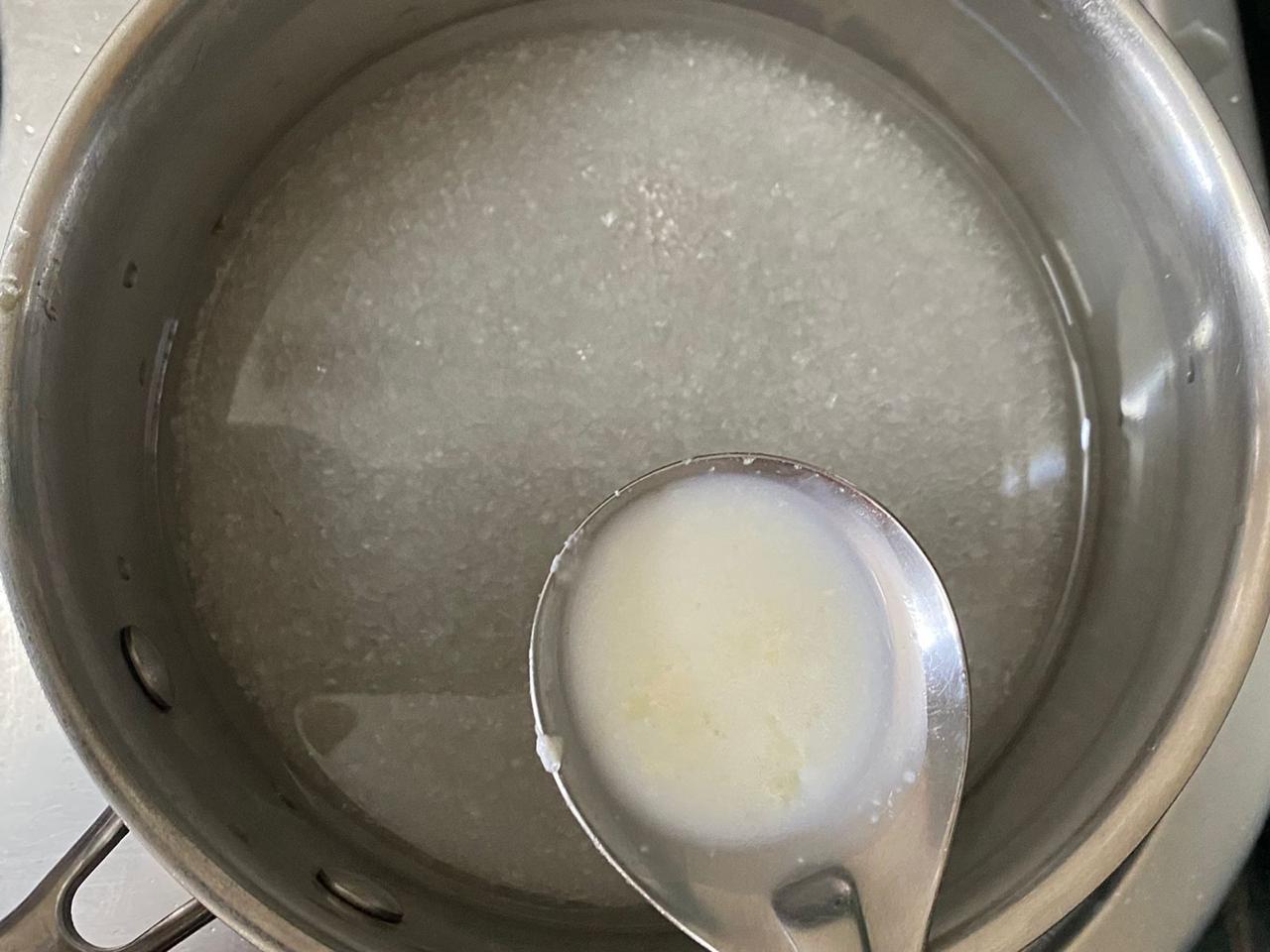
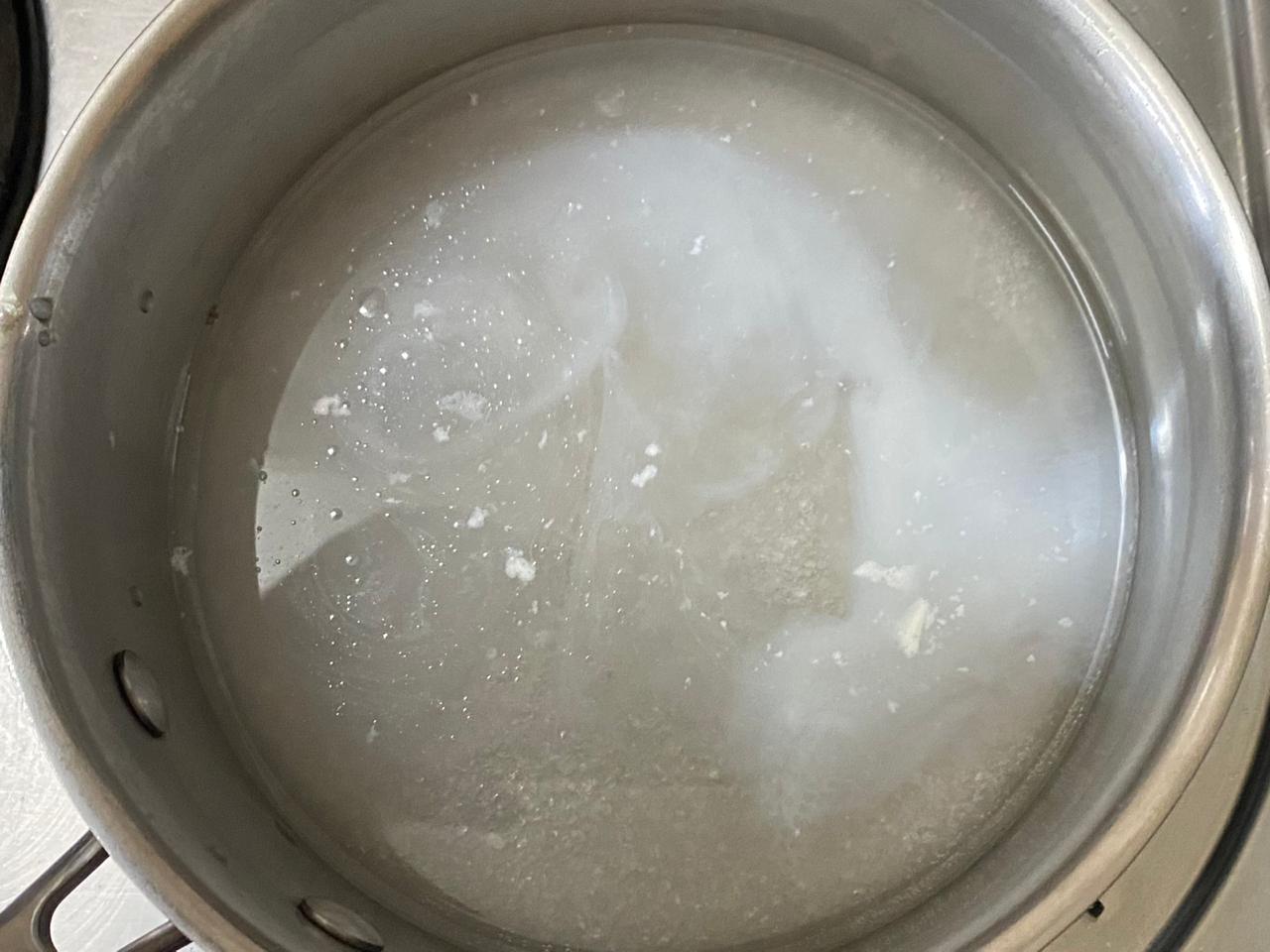
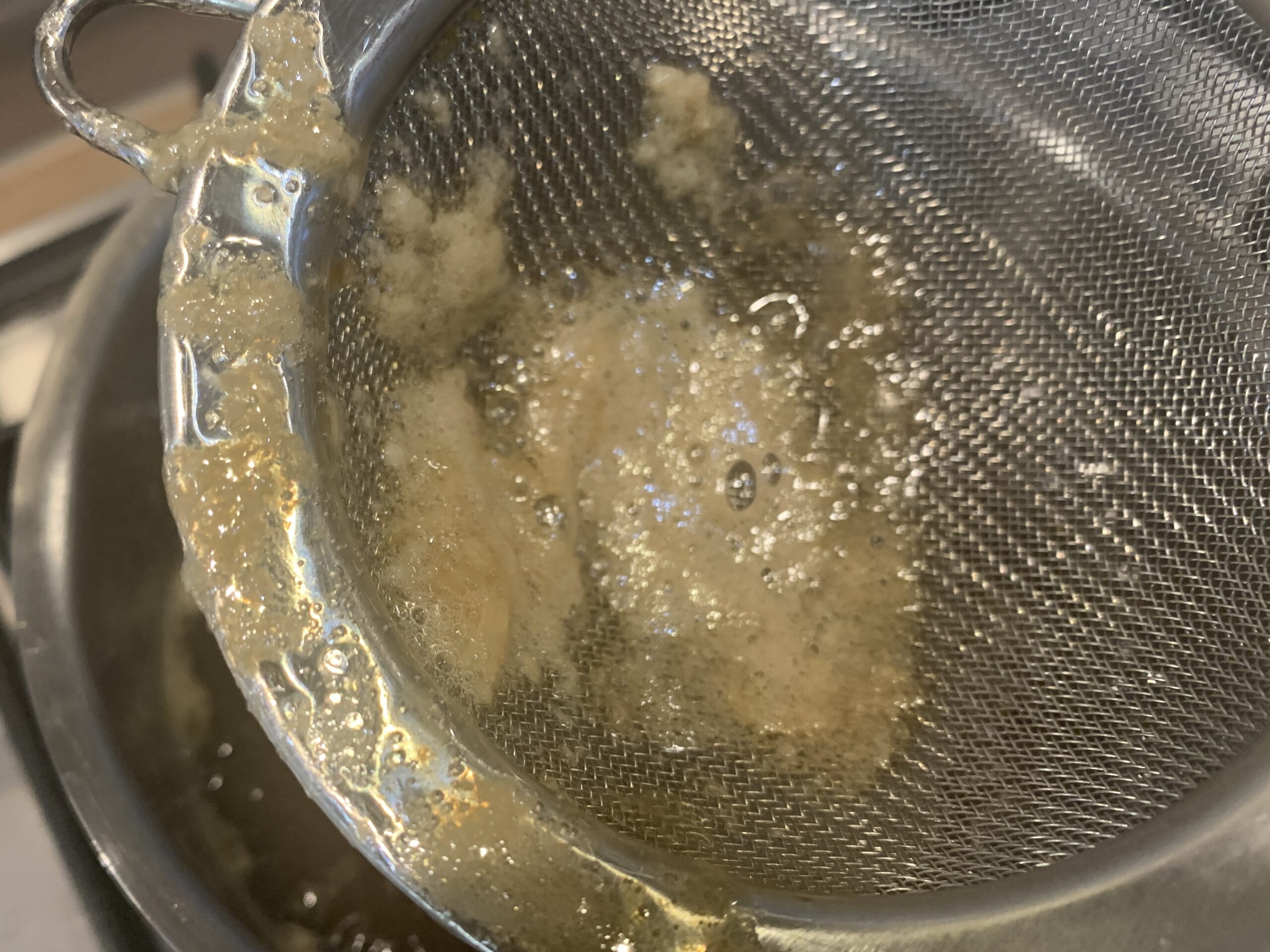
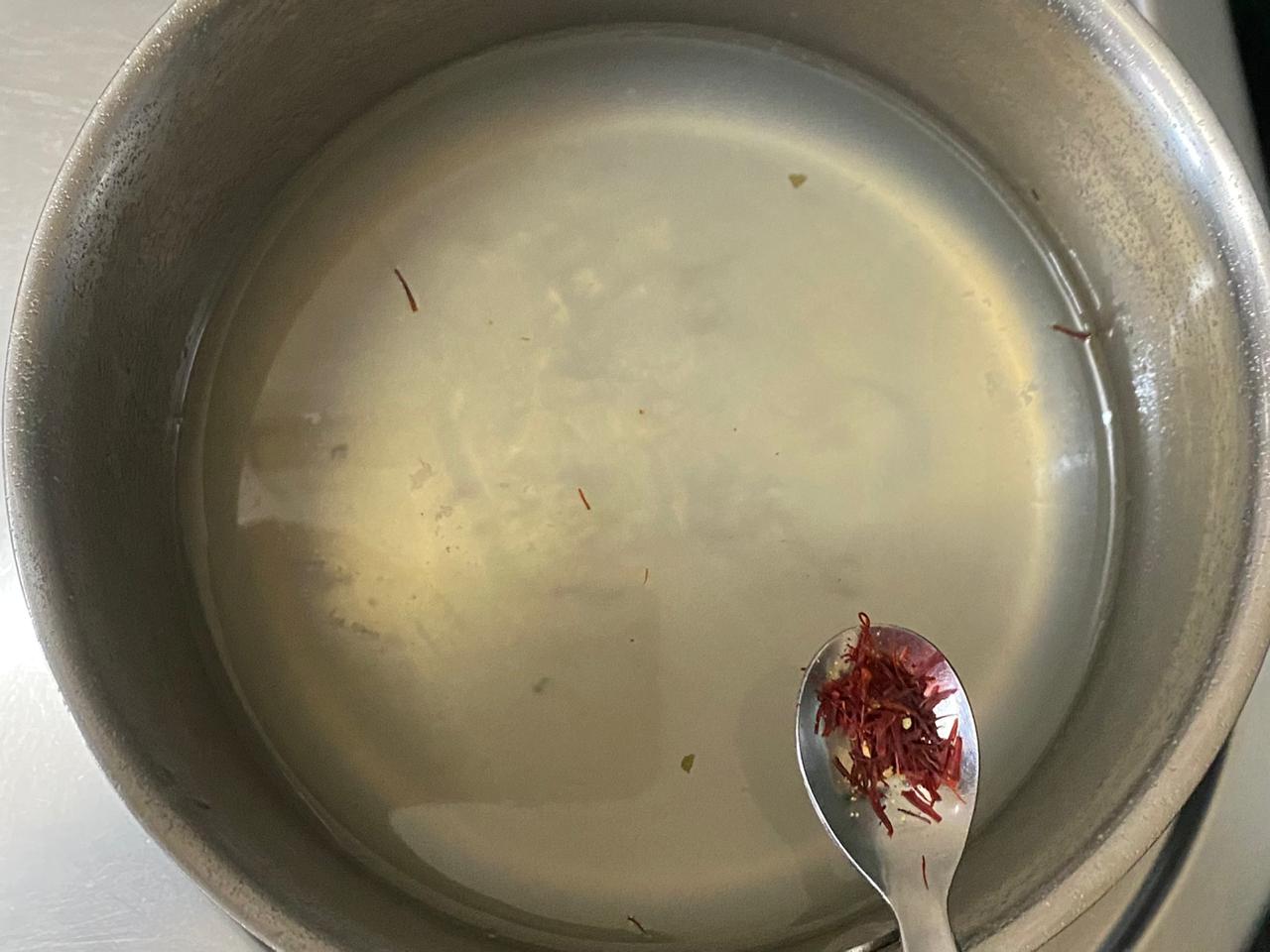
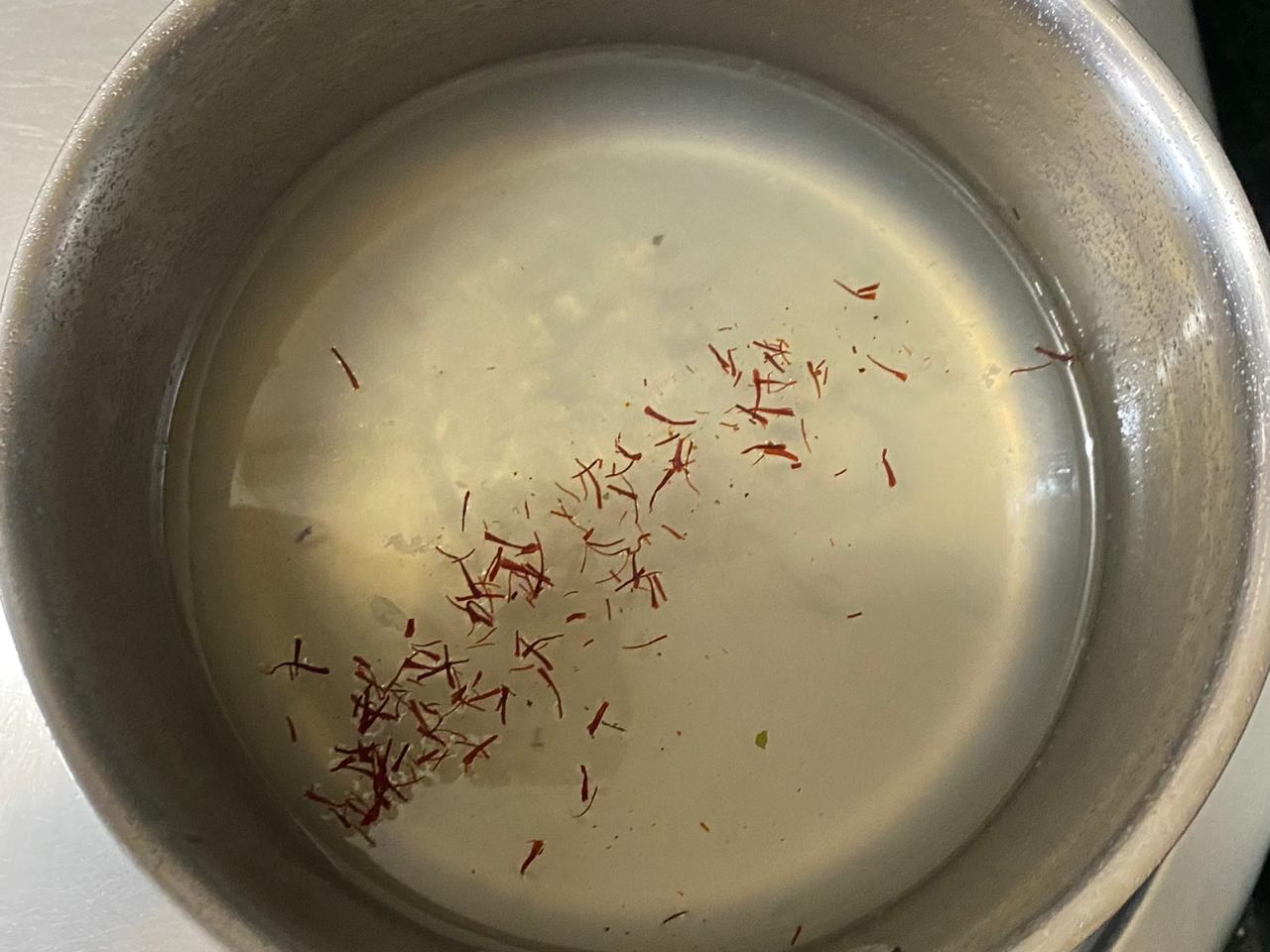
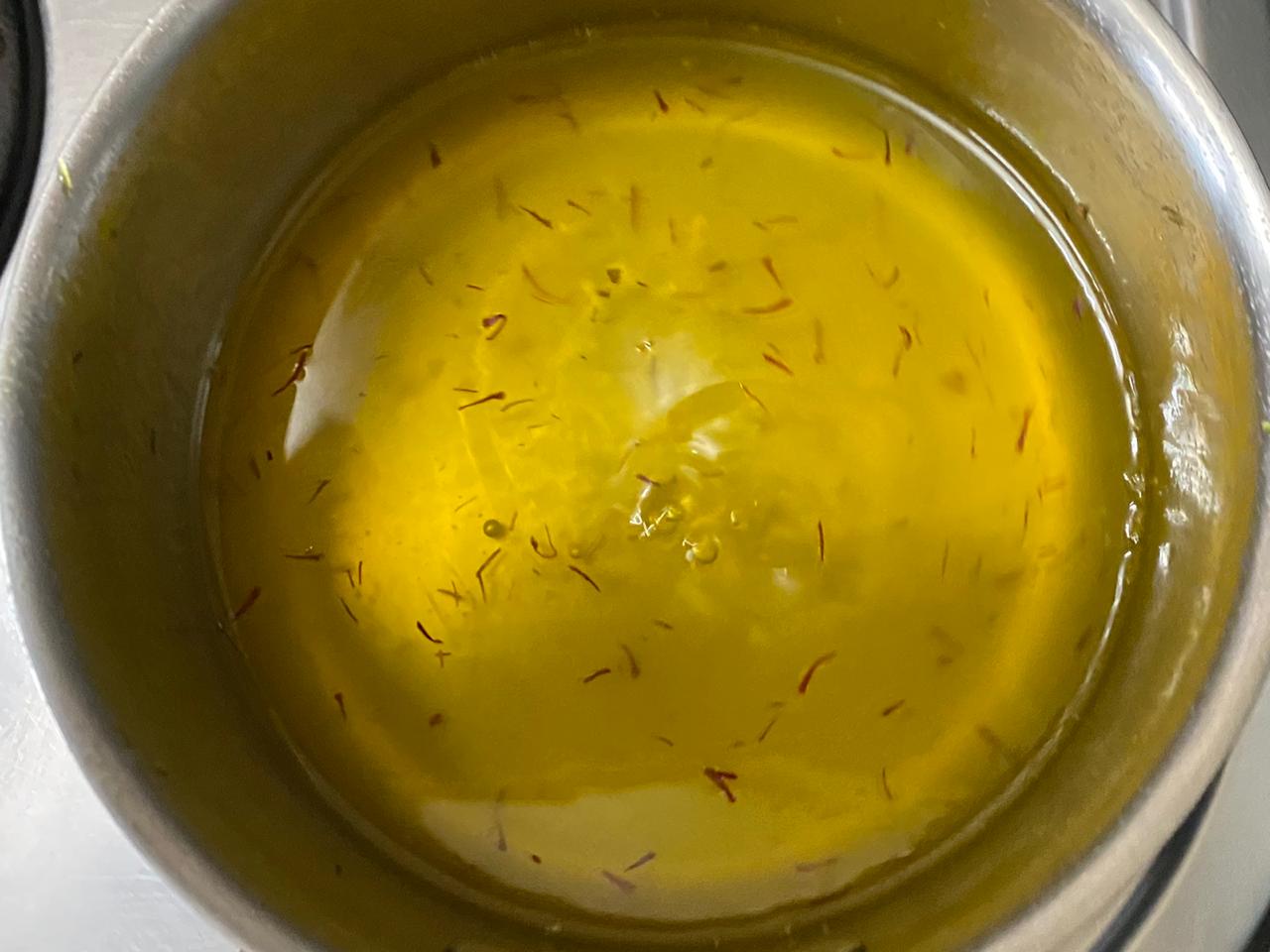
While the dal is roasting, boil the water and sugar together. Boil it for 2-3 minutes stirring constantly to dissolve the sugar. When the sugar is fully dissolved, add 2 teaspoons milk to the syrup (the milk causes any impurities to come to surface so that they could be removed) and allow to boil for 2-3 minutes. Remove the scum formed on the surface by skimming the syrup with a spoon/strainer.
Add the saffron and cardamom (optional) to the sugar syrup and stir.
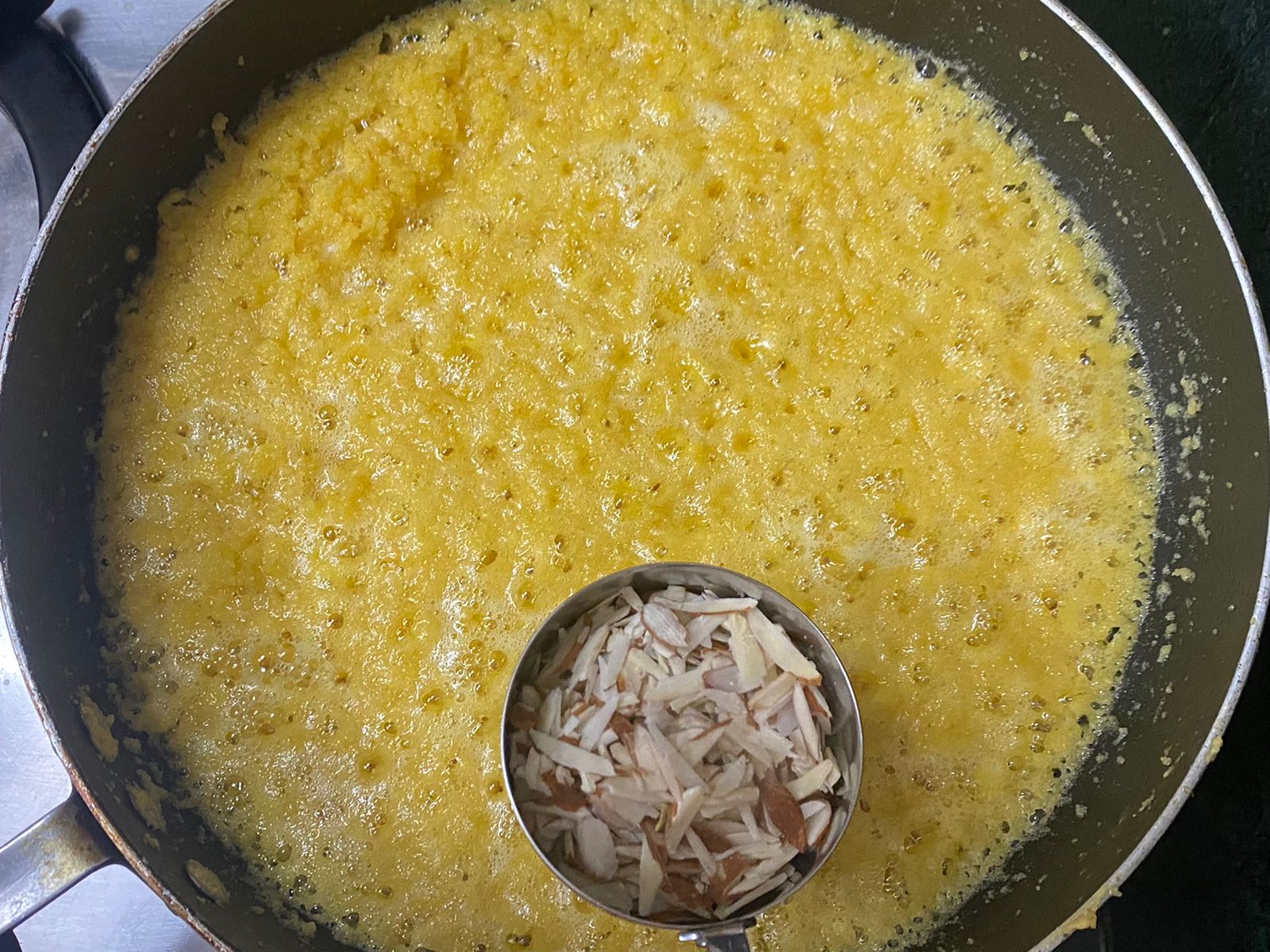
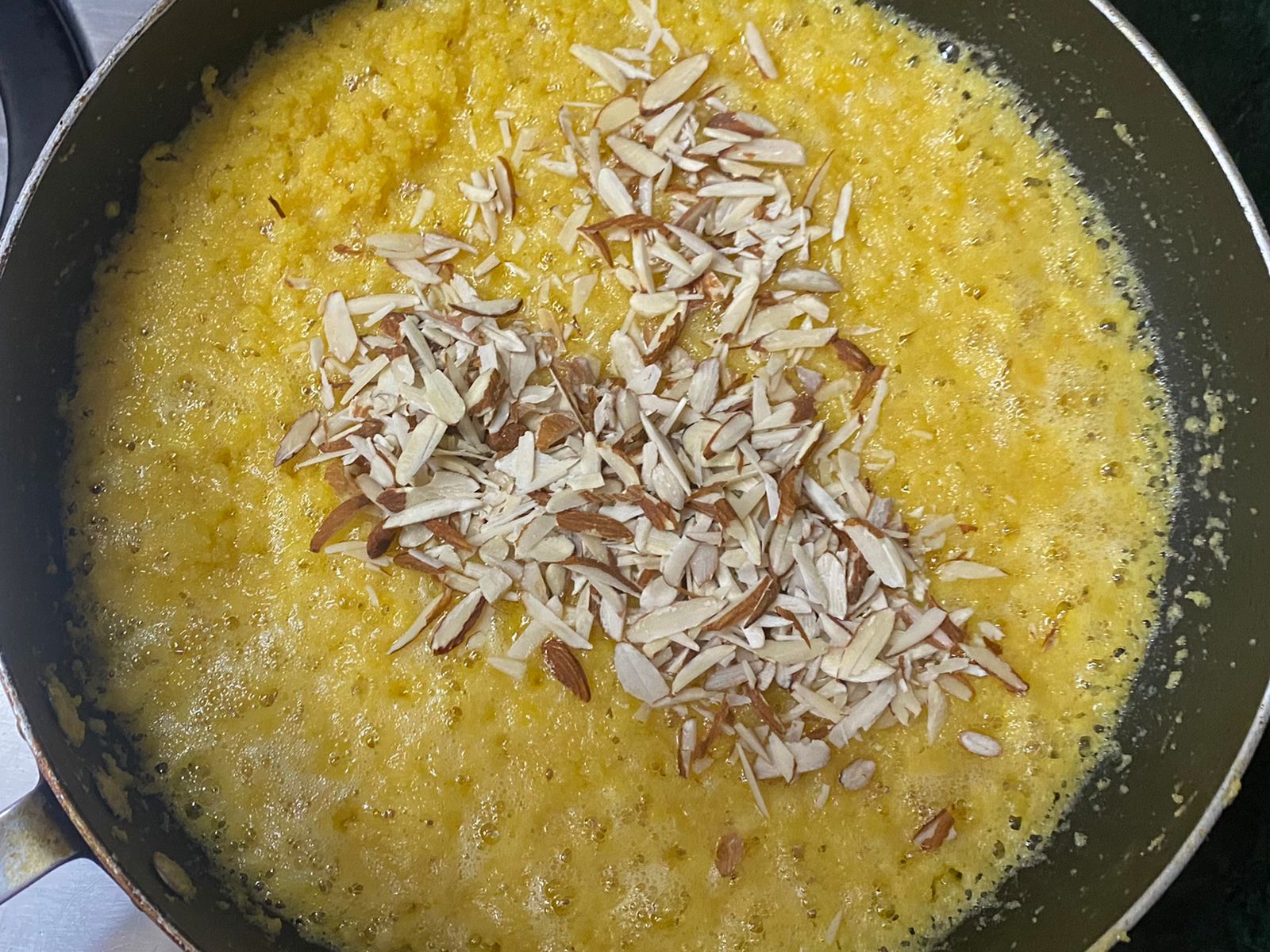
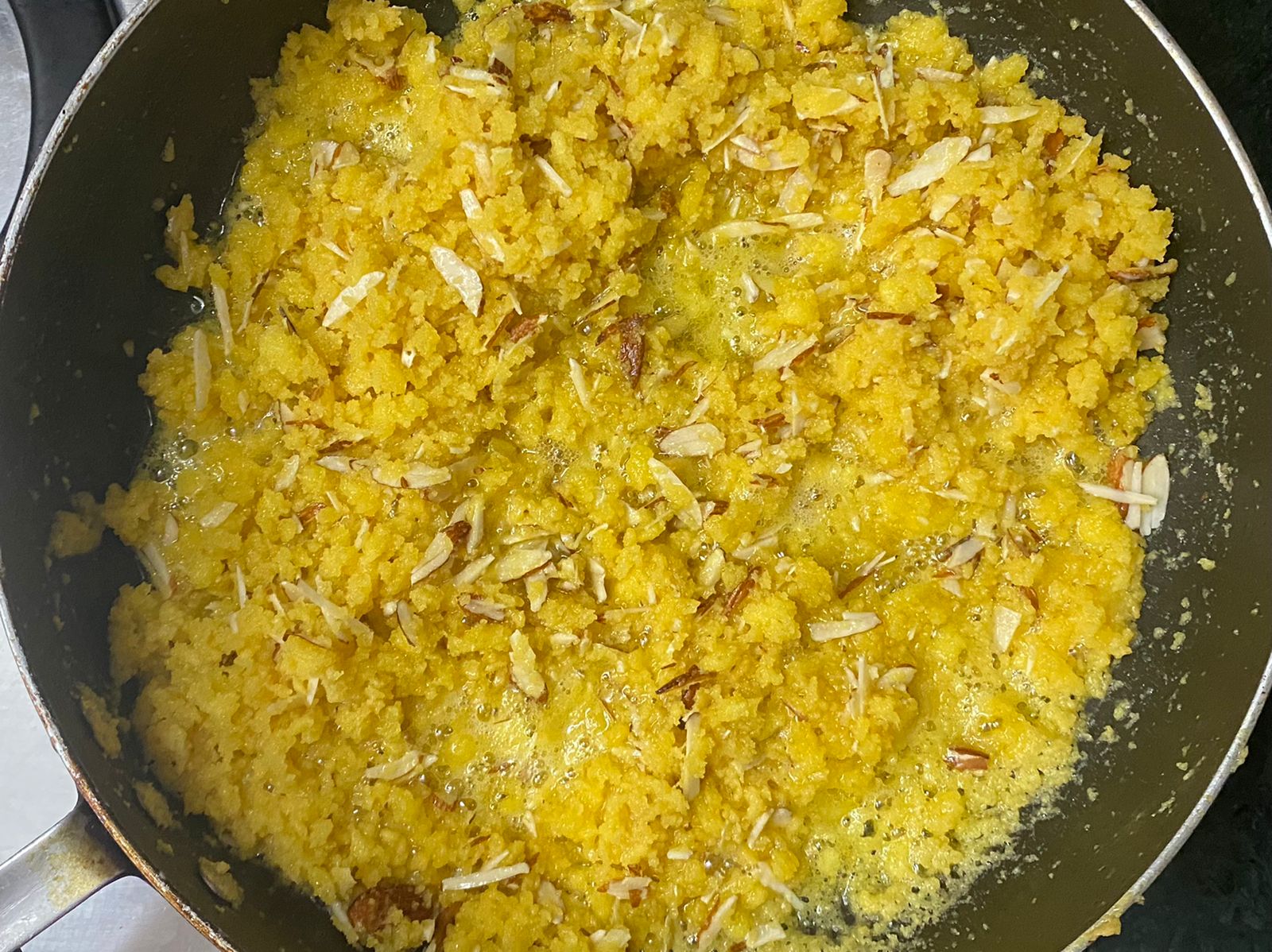
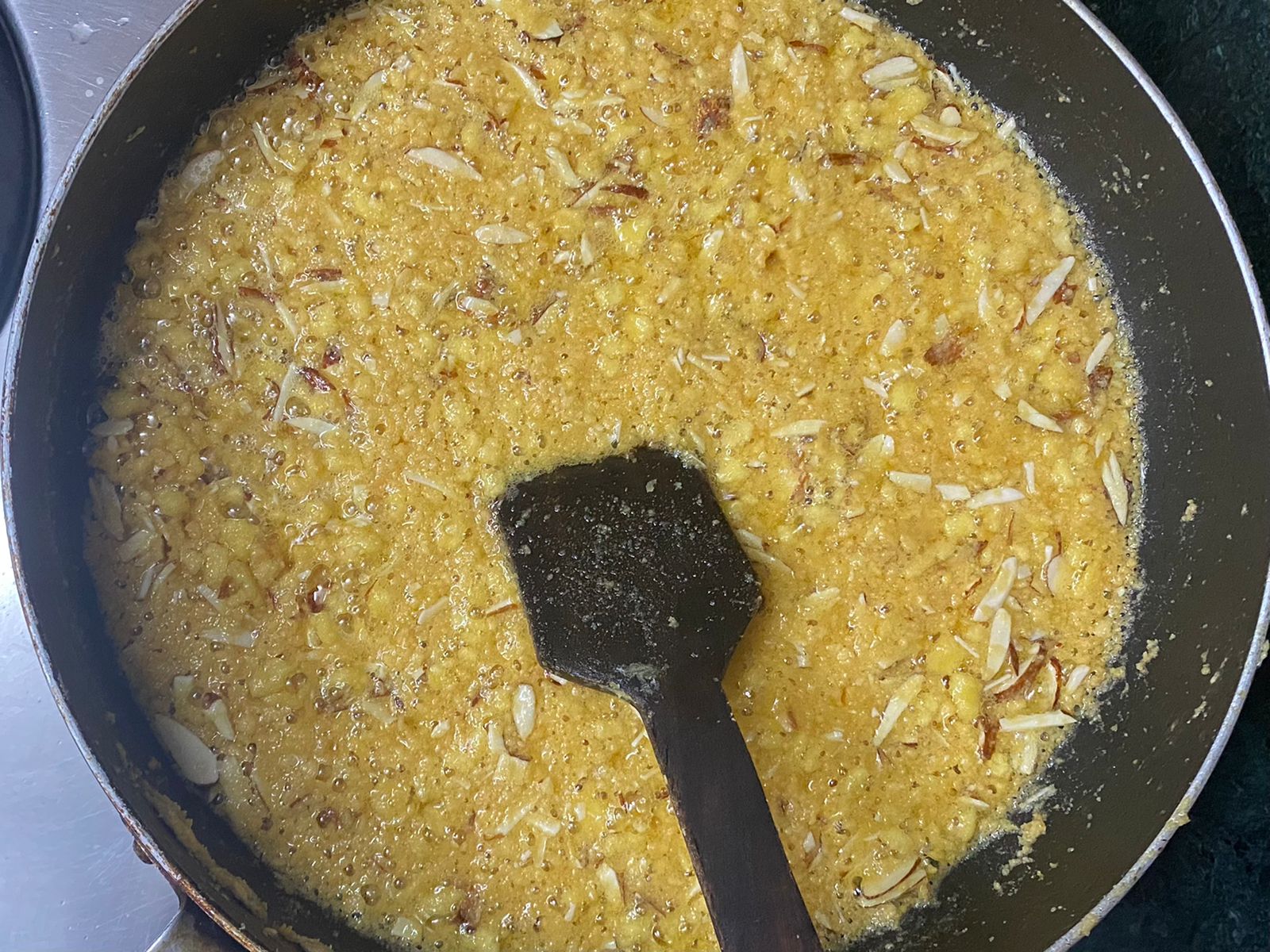
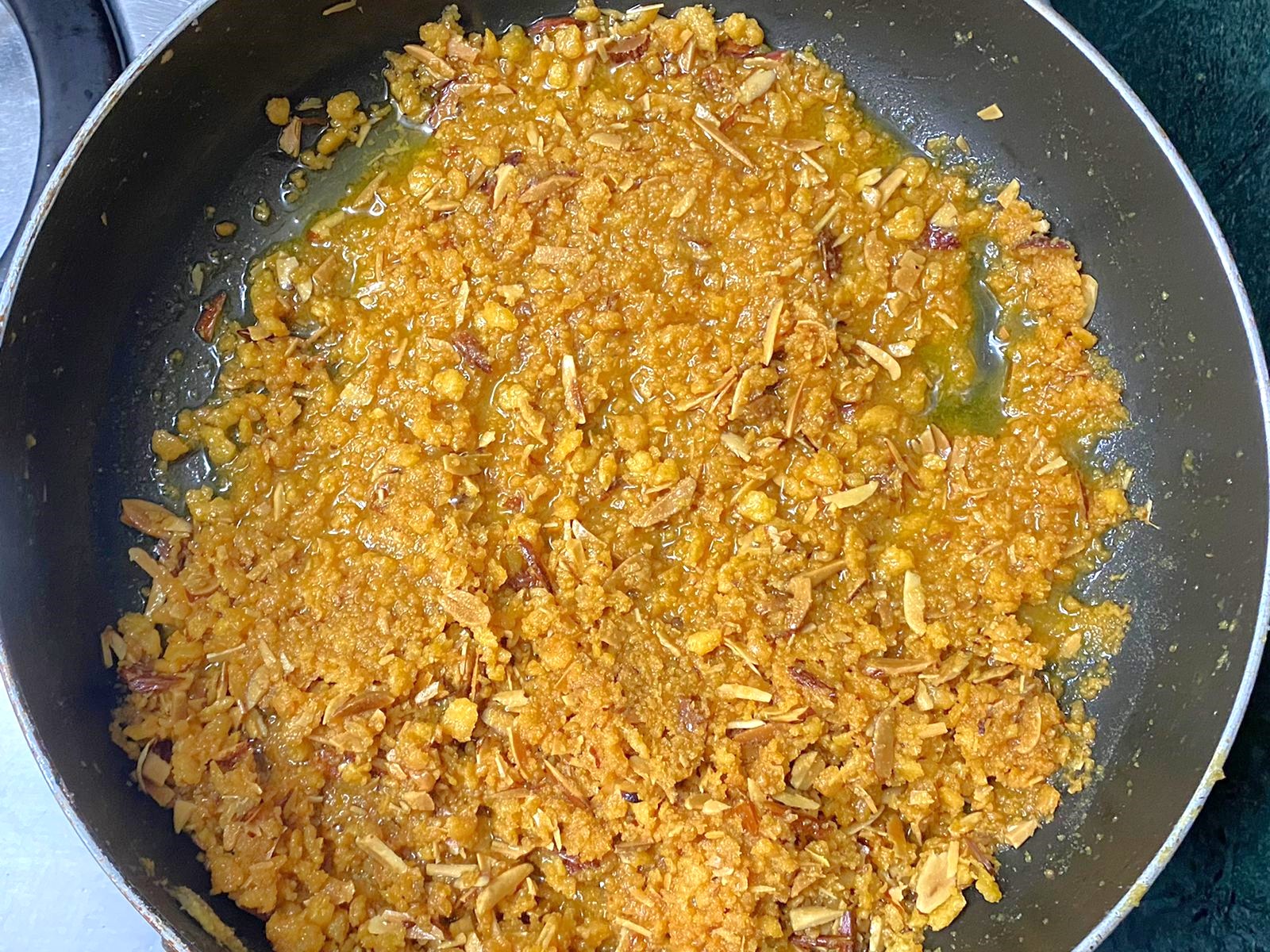
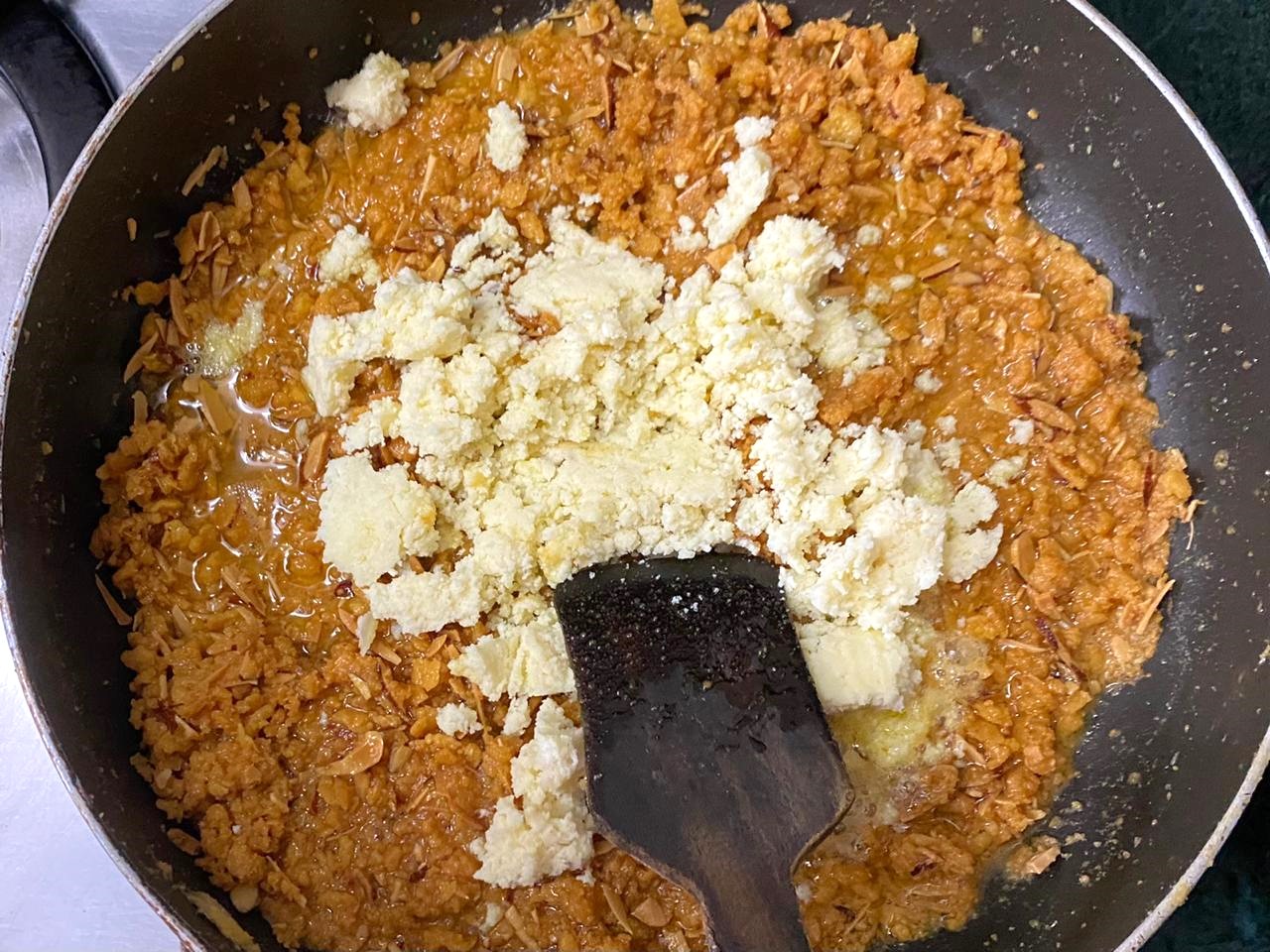
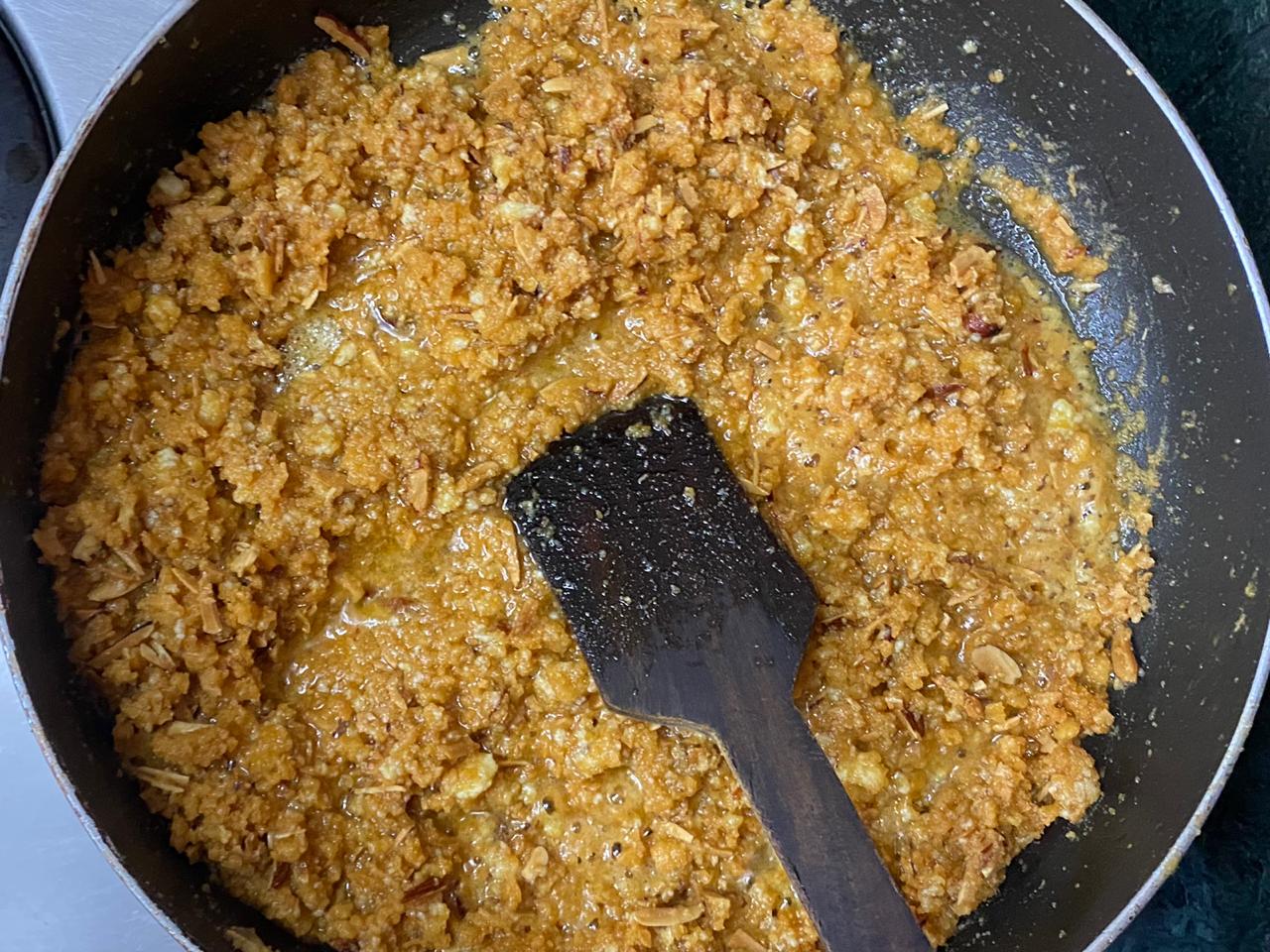
Once the moong dal is cooked for 20-25 minutes and has left the sides, add the almonds and cook for 5 minutes to roast them slightly. Finally add the crumbled khoya and mix.
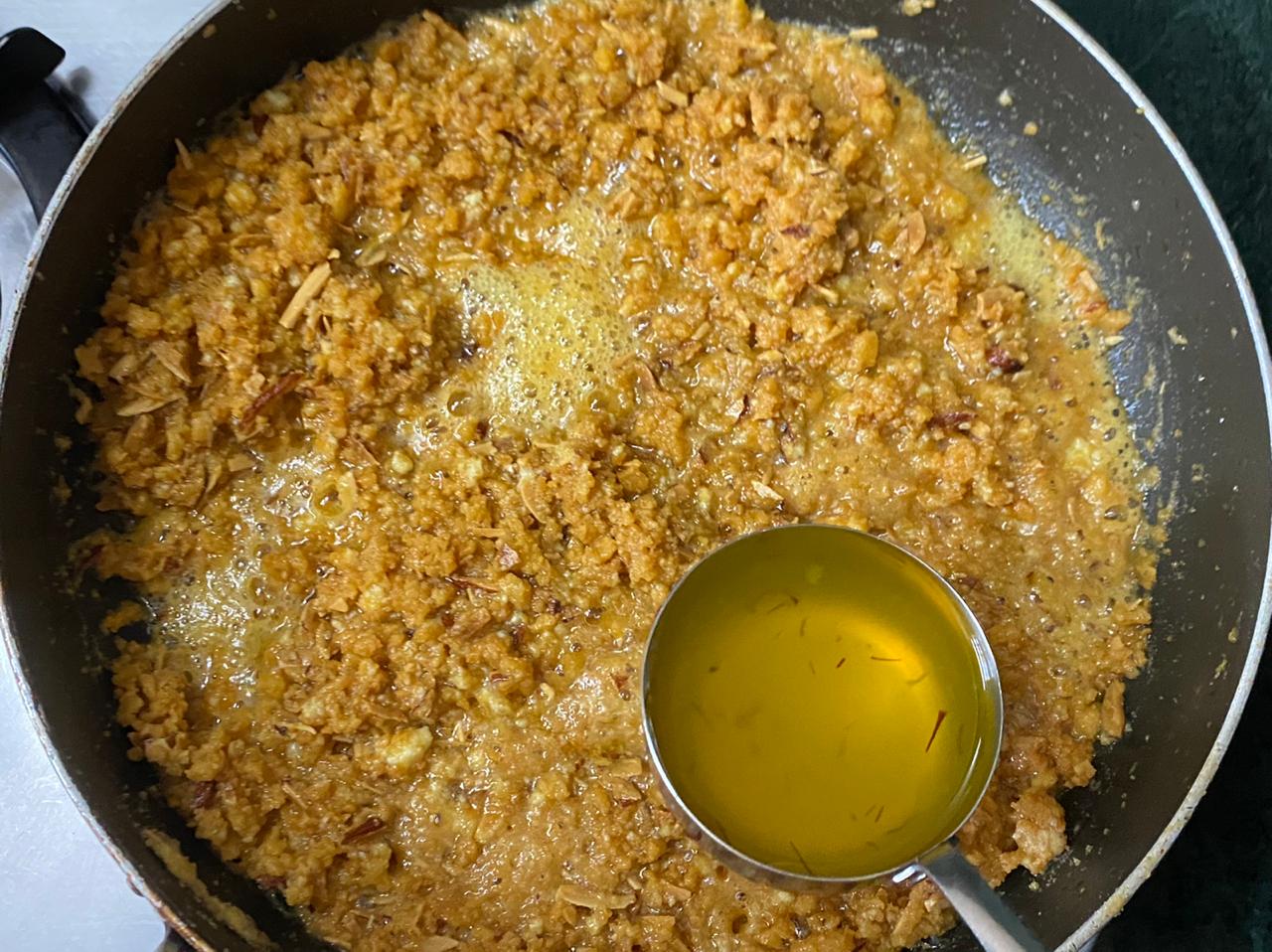
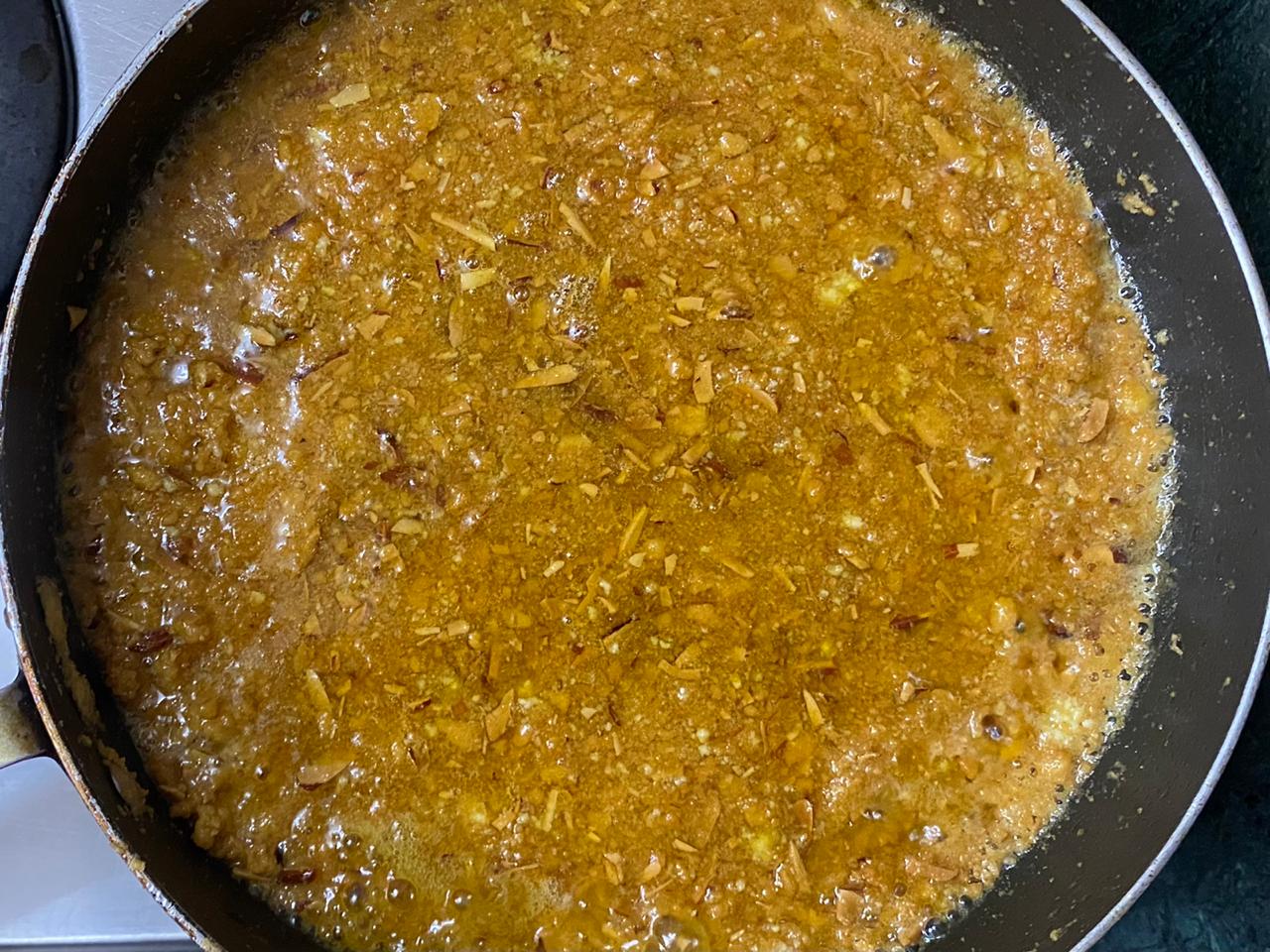
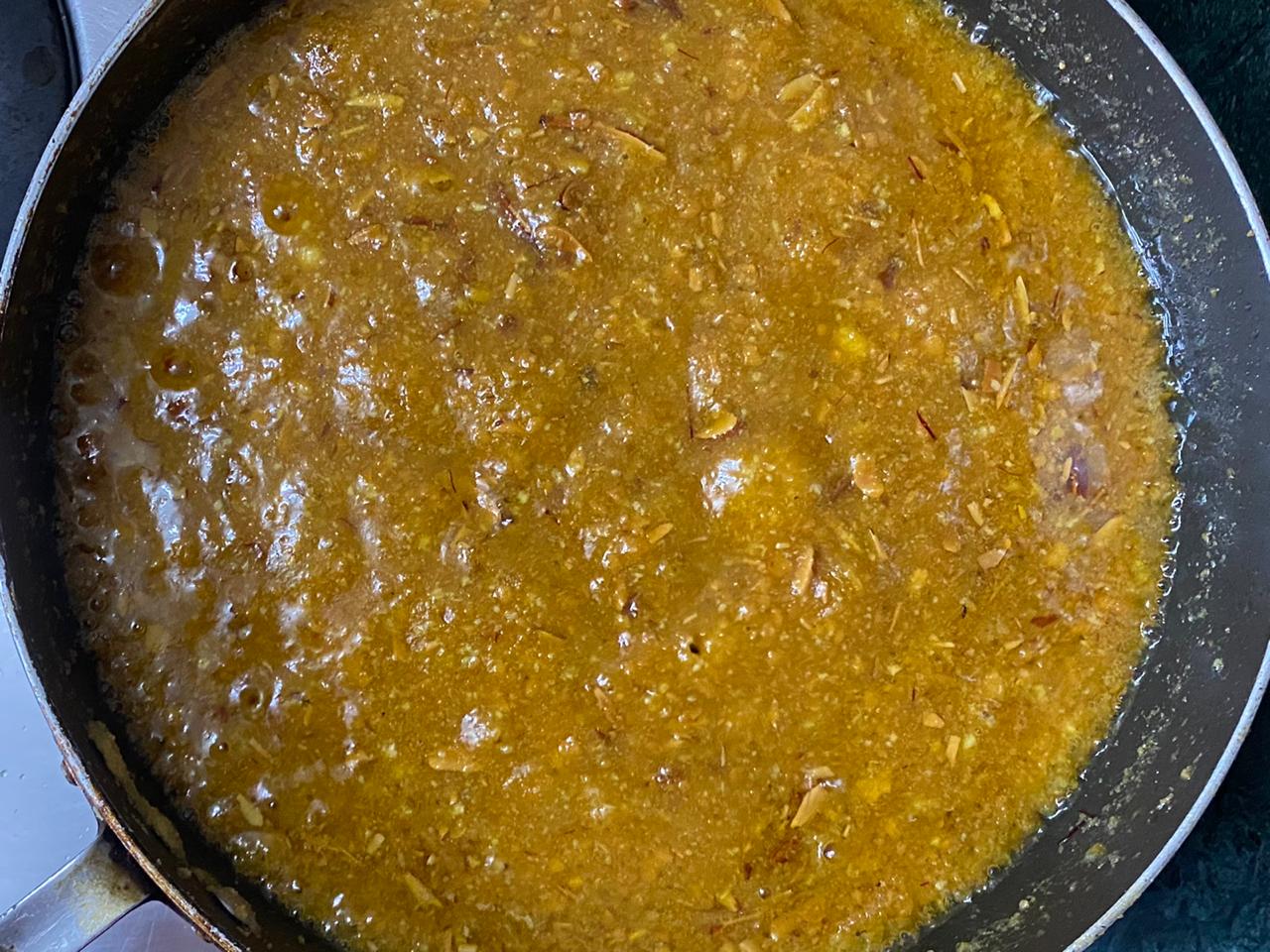
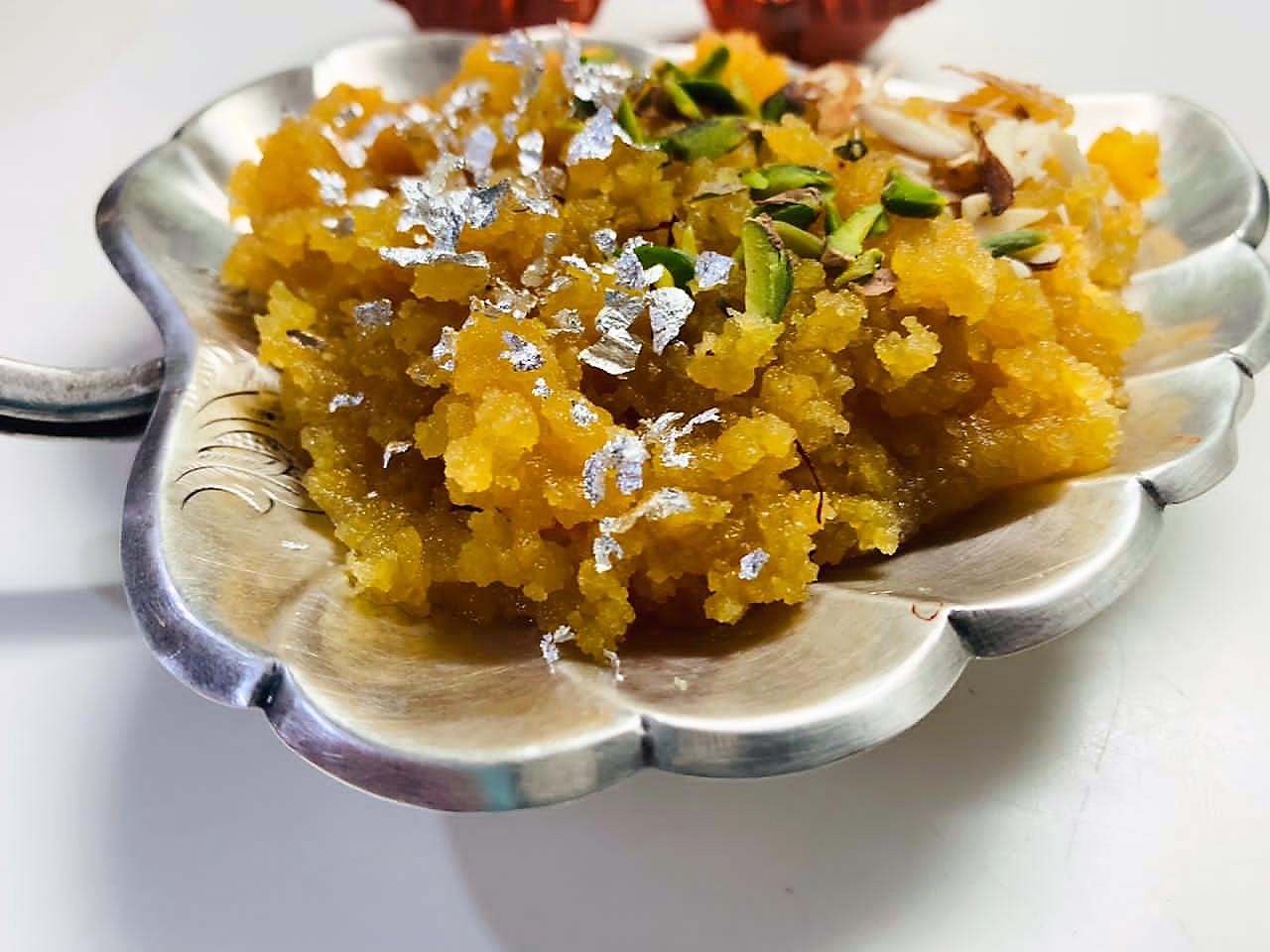
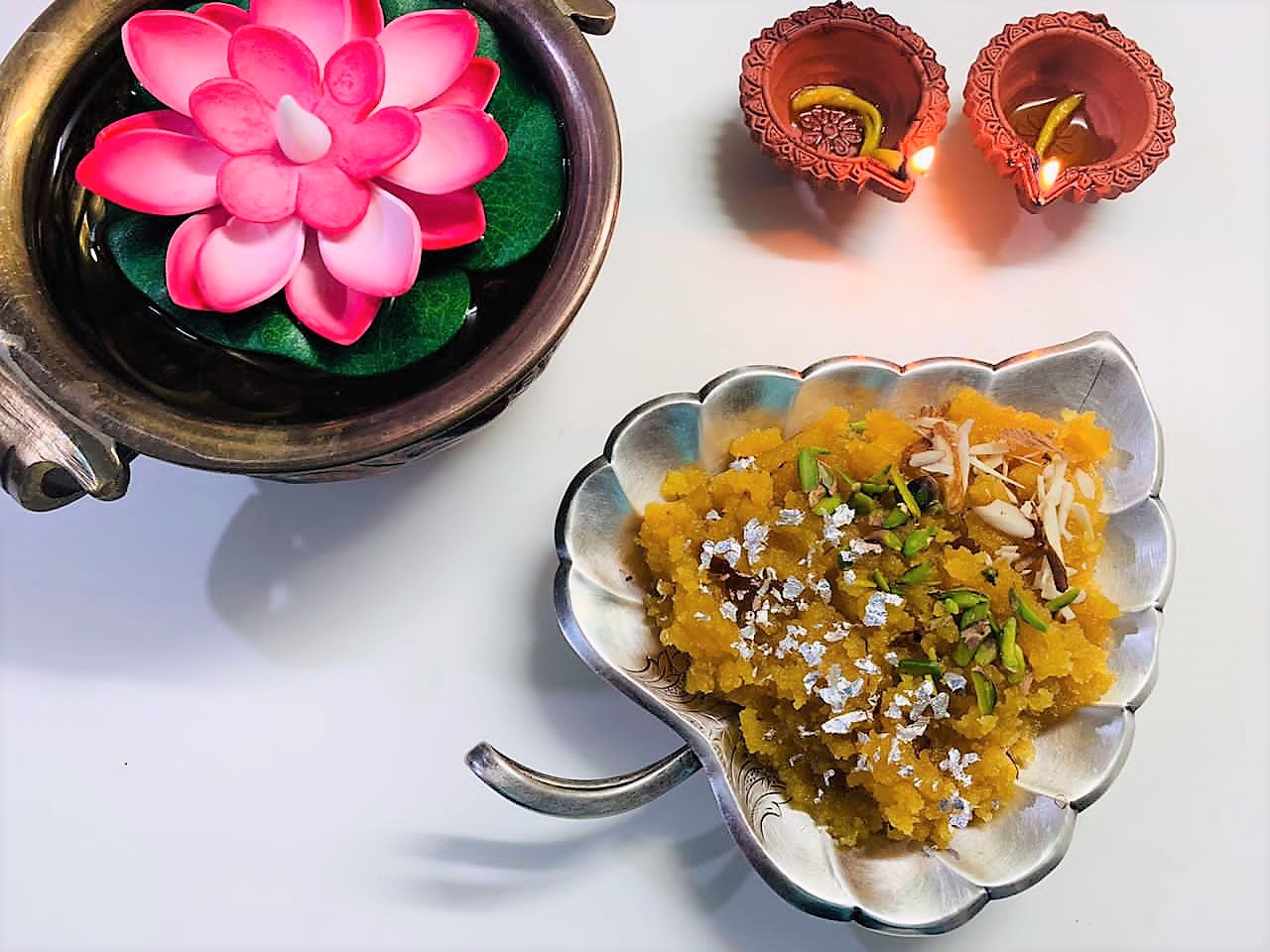
Finally add the sugar syrup and cook for 4-5 minutes mixing constantly. (The mixture bubbles and sizzles, so be careful while adding it) Simmer and cook, stirring often. The sugar syrup should get absorbed and the ghee begins to separate slightly. This means the halwa is finally done.
Garnish with chopped nuts and serve hot!


